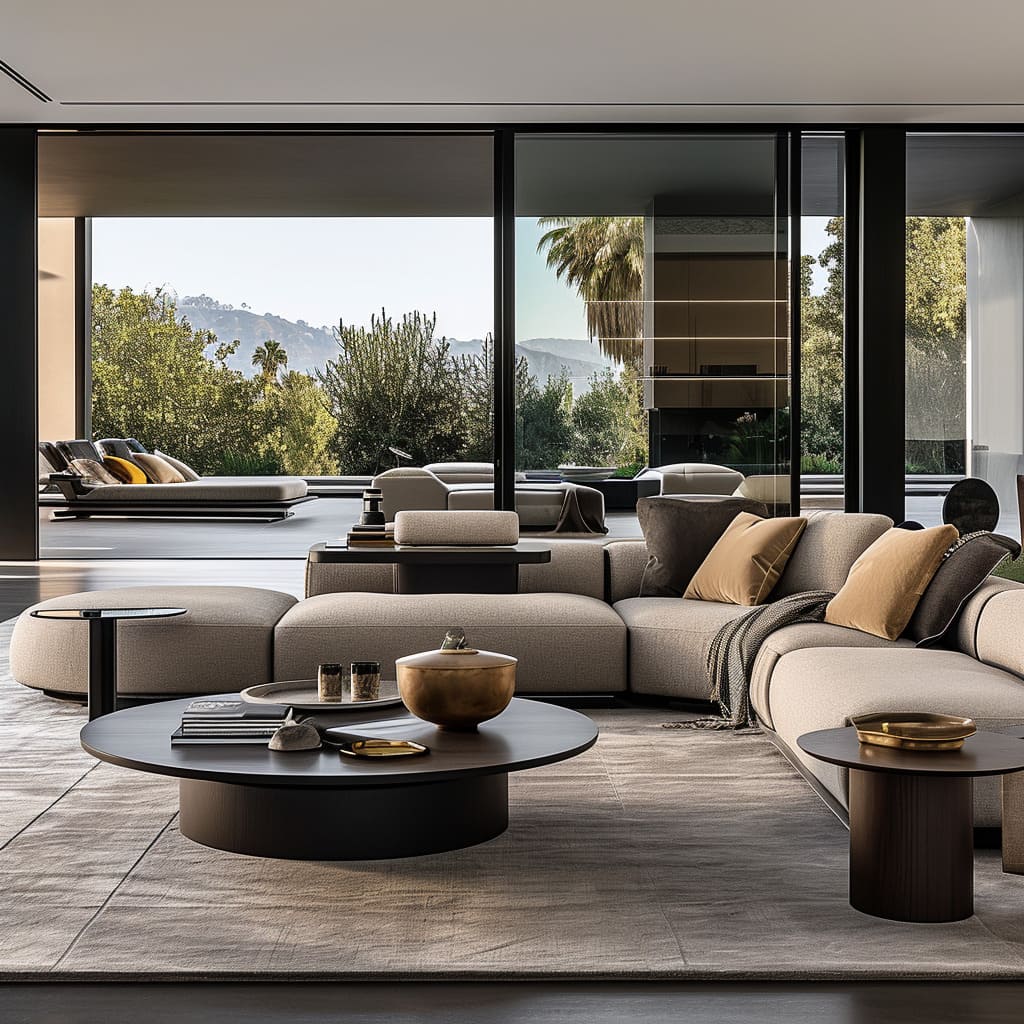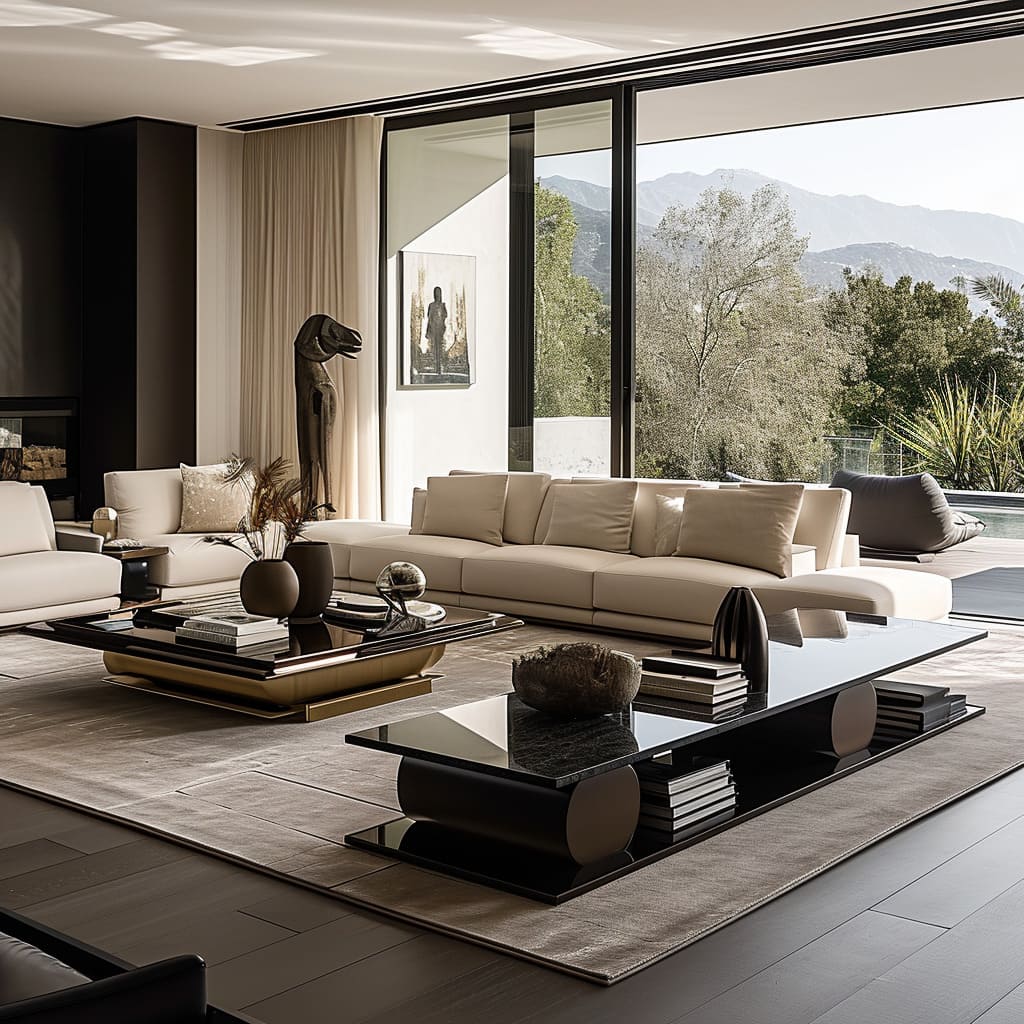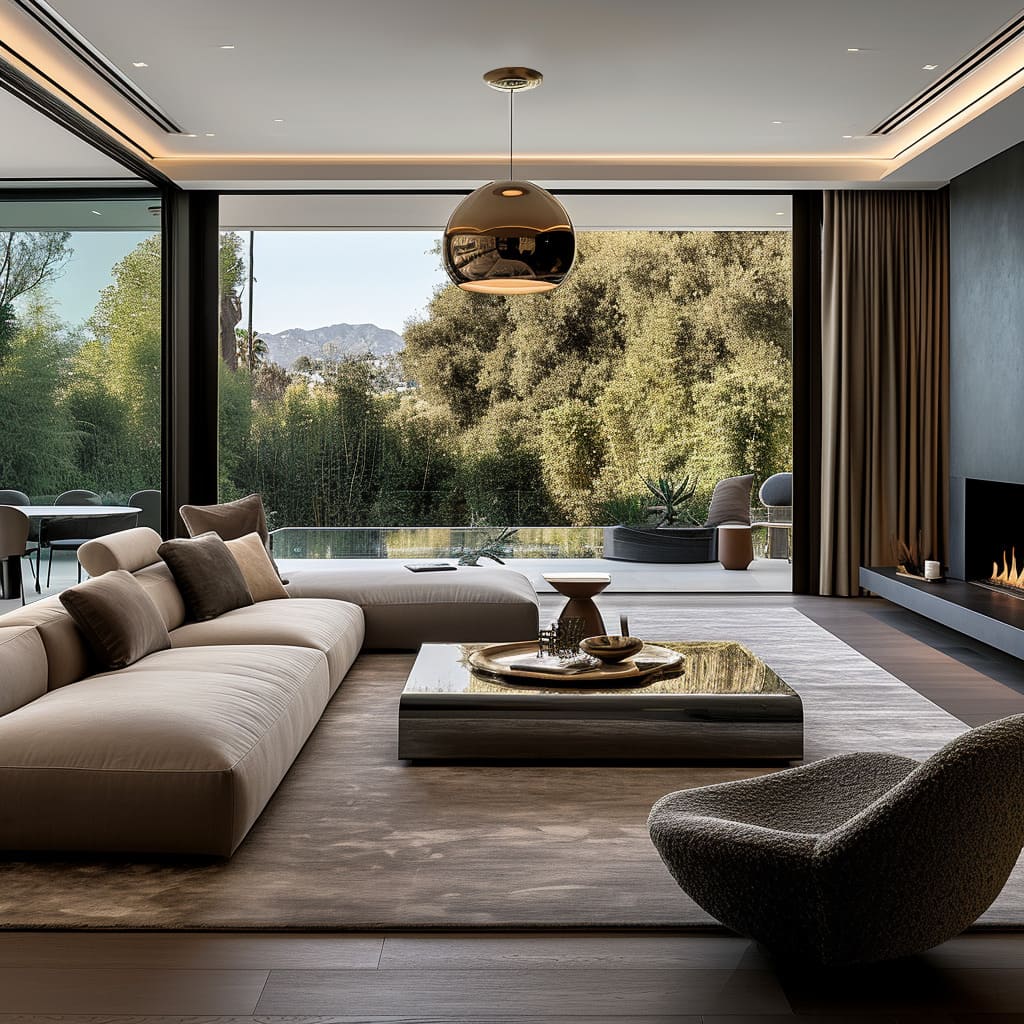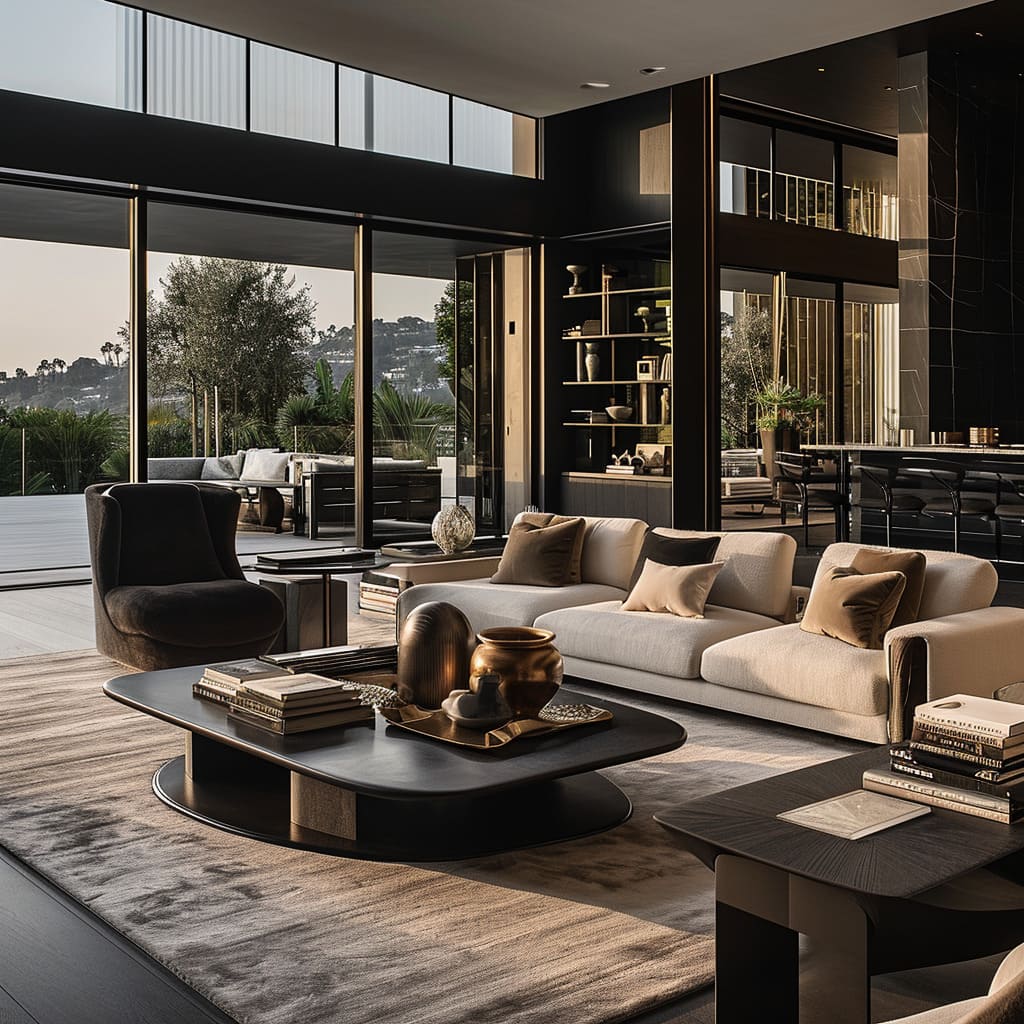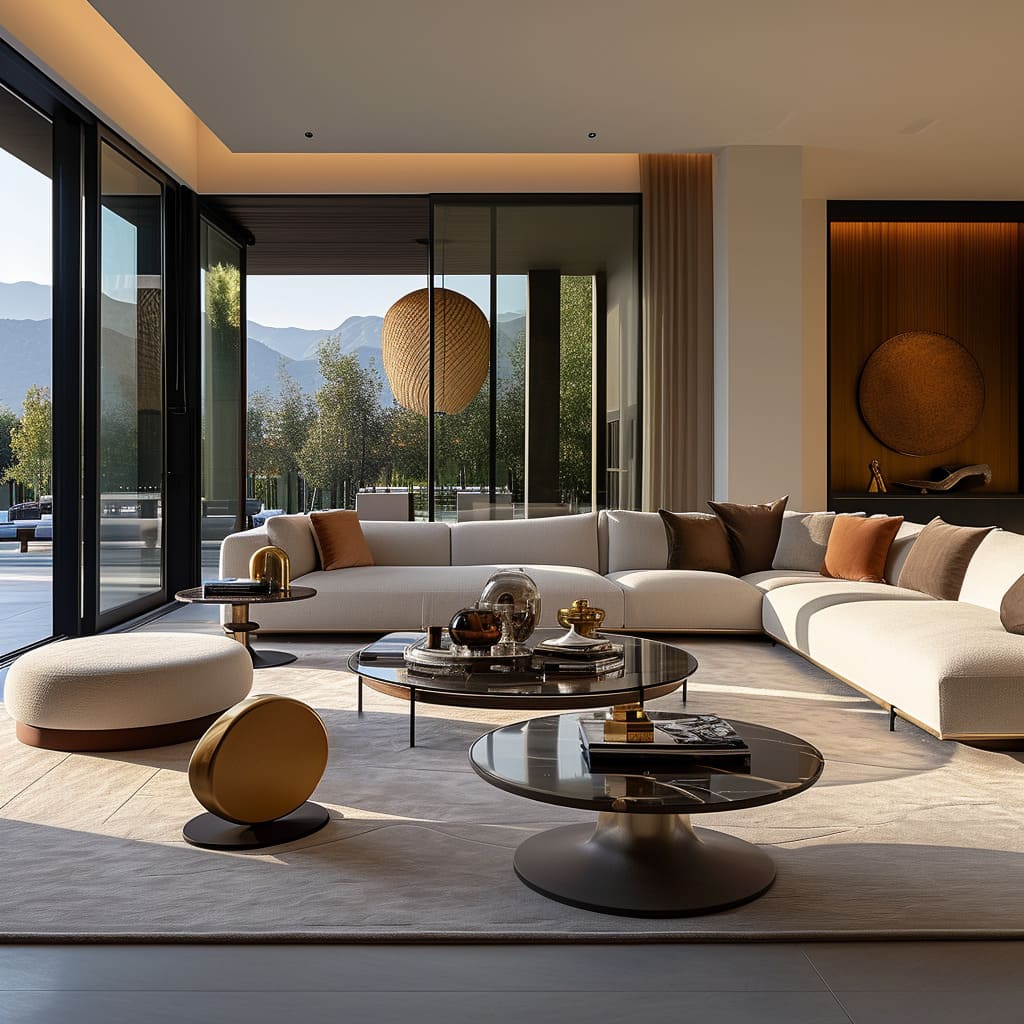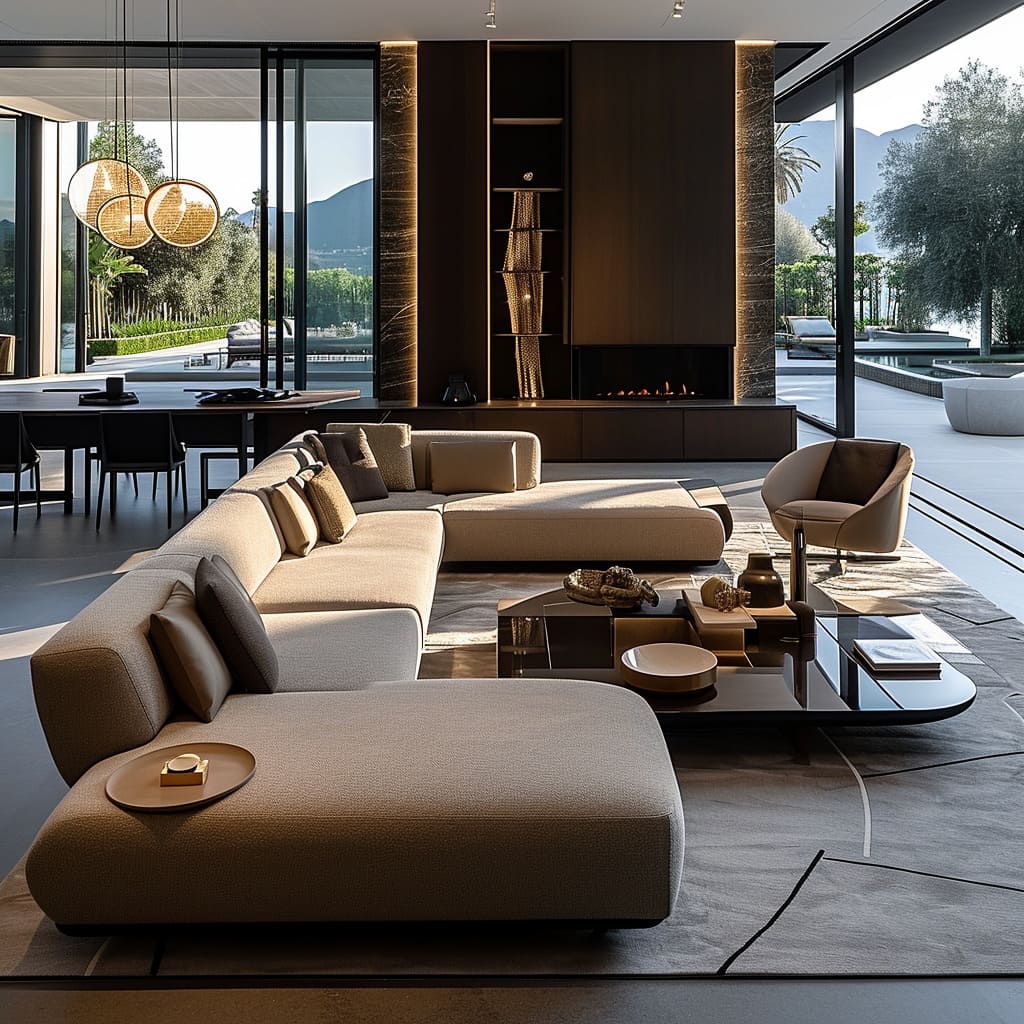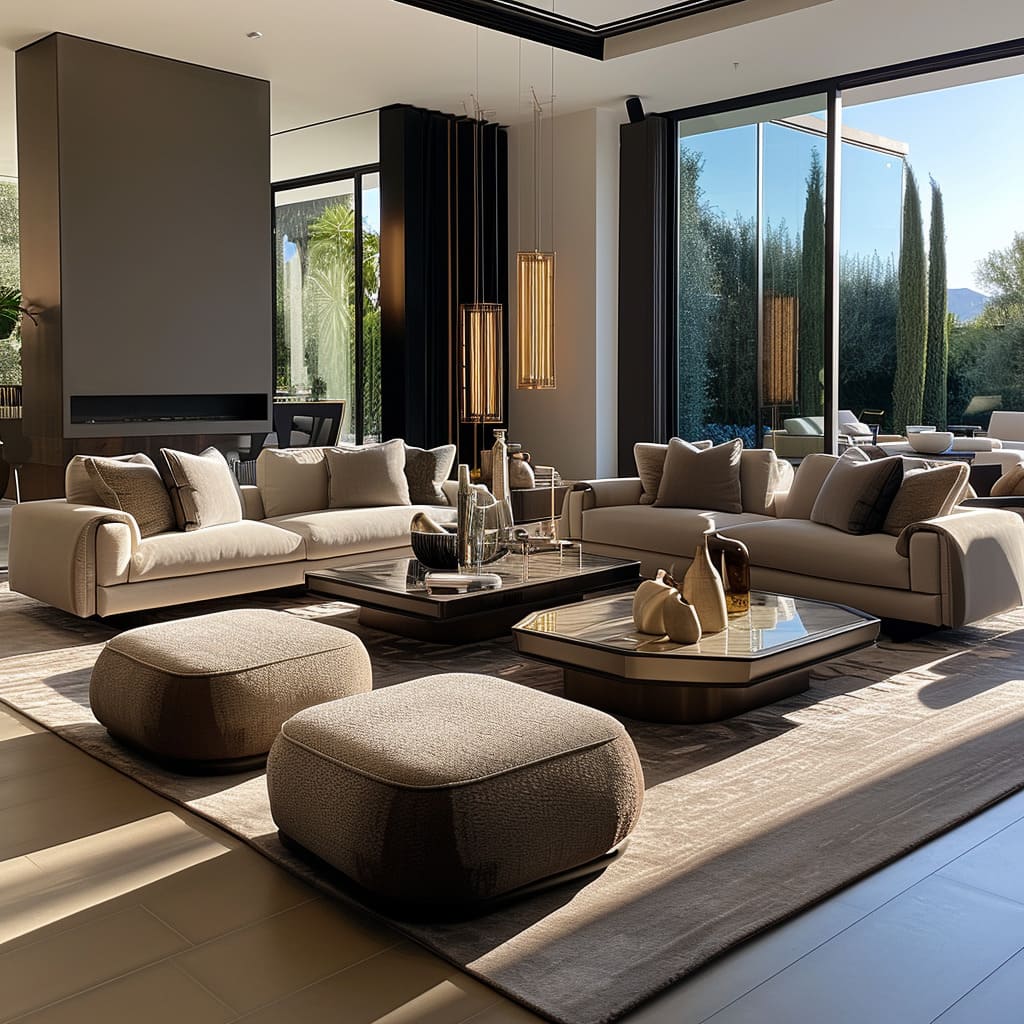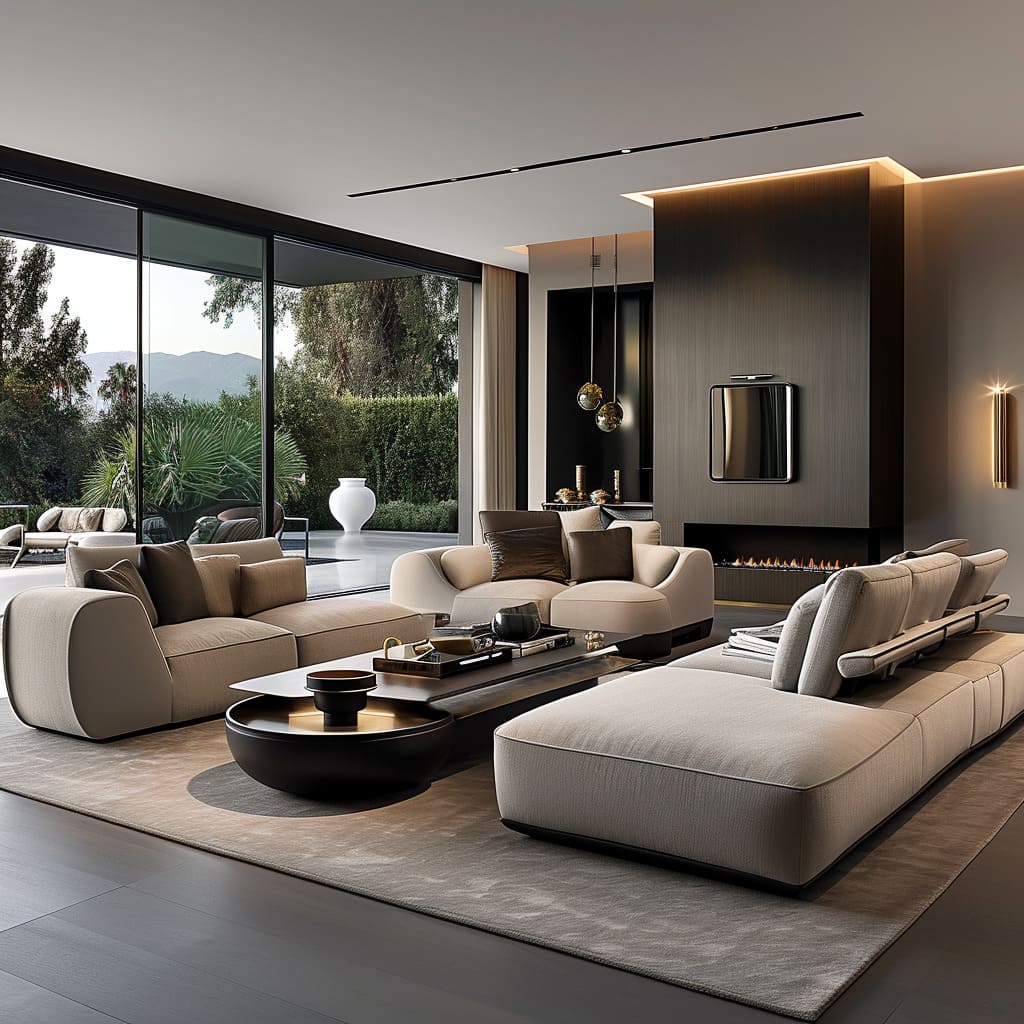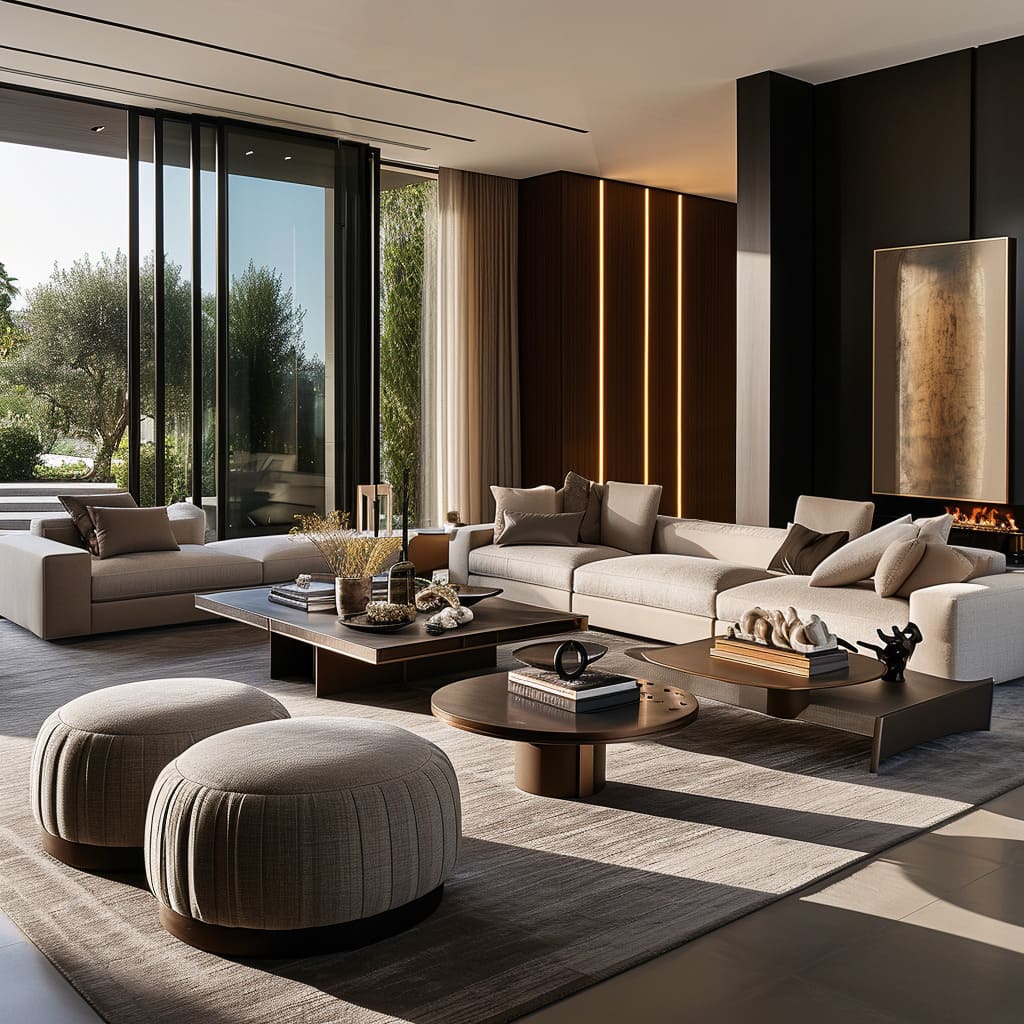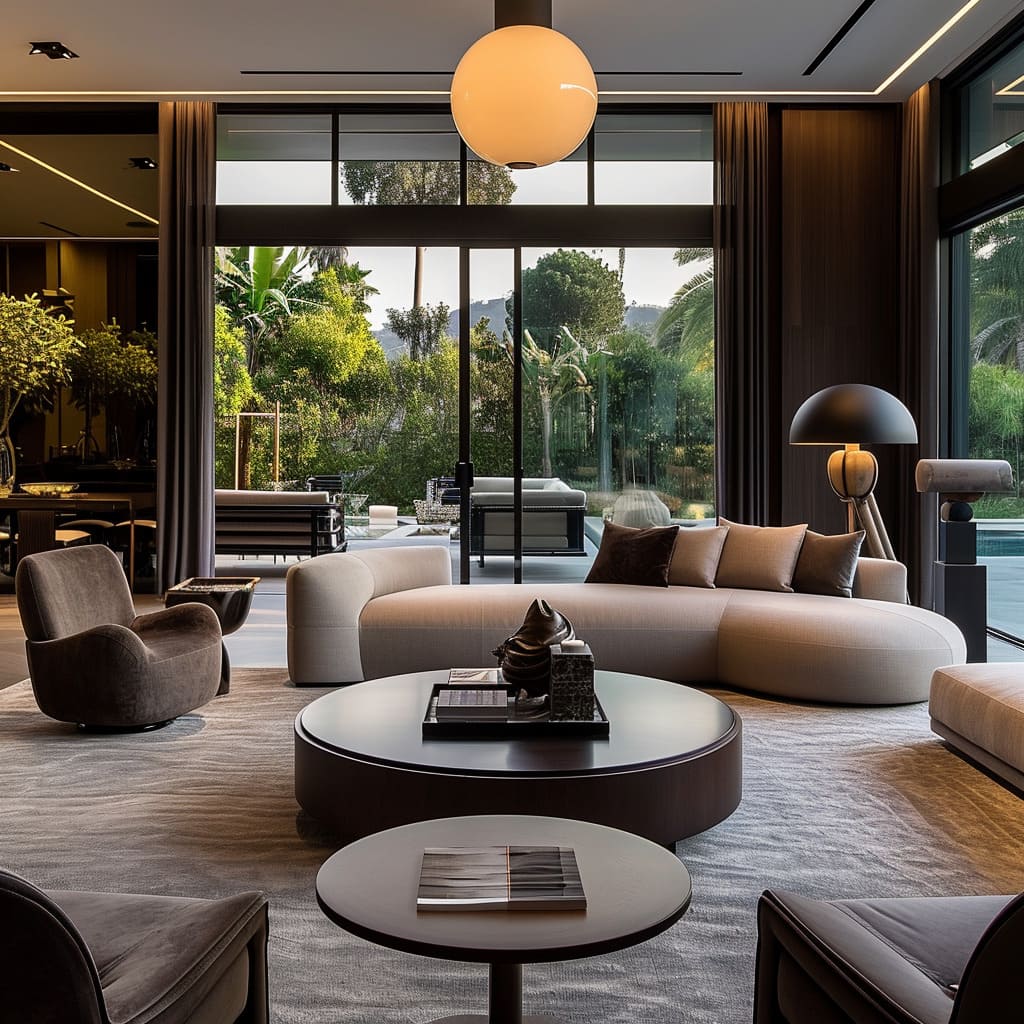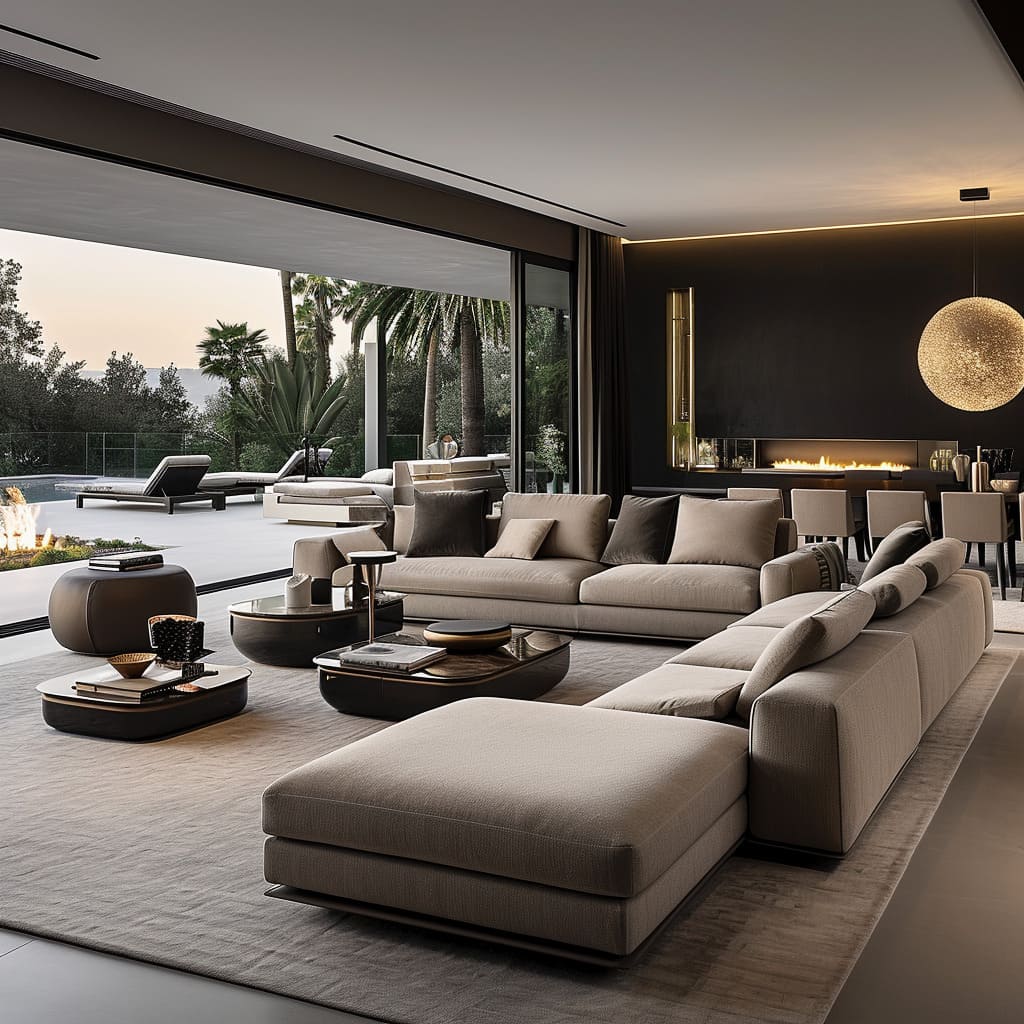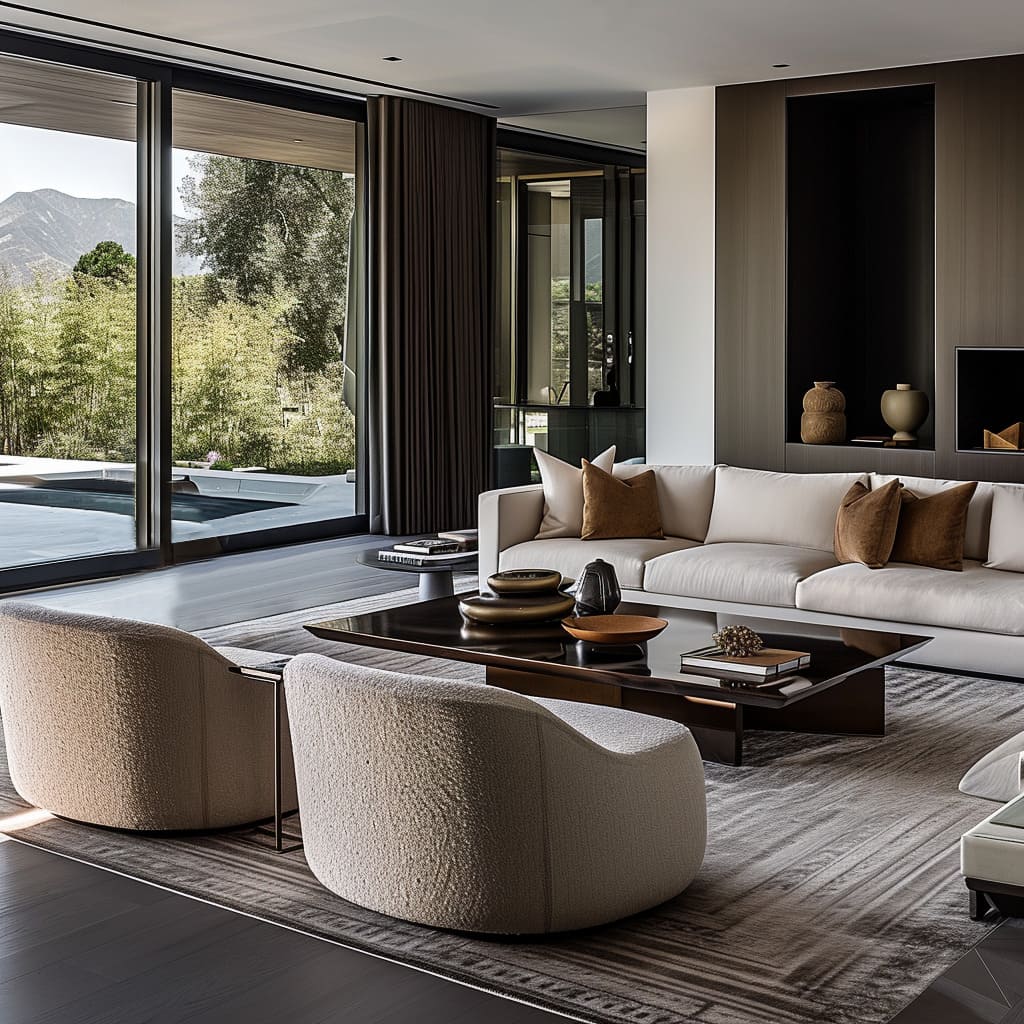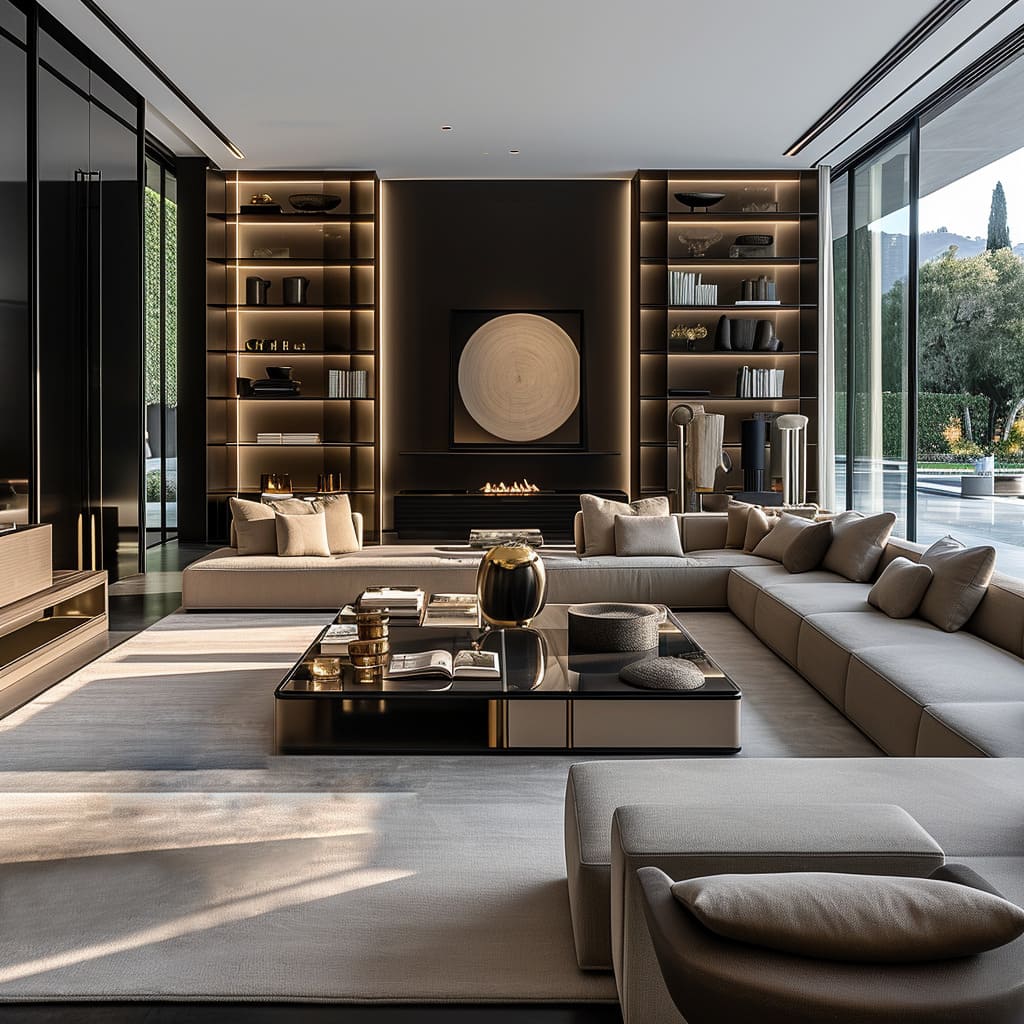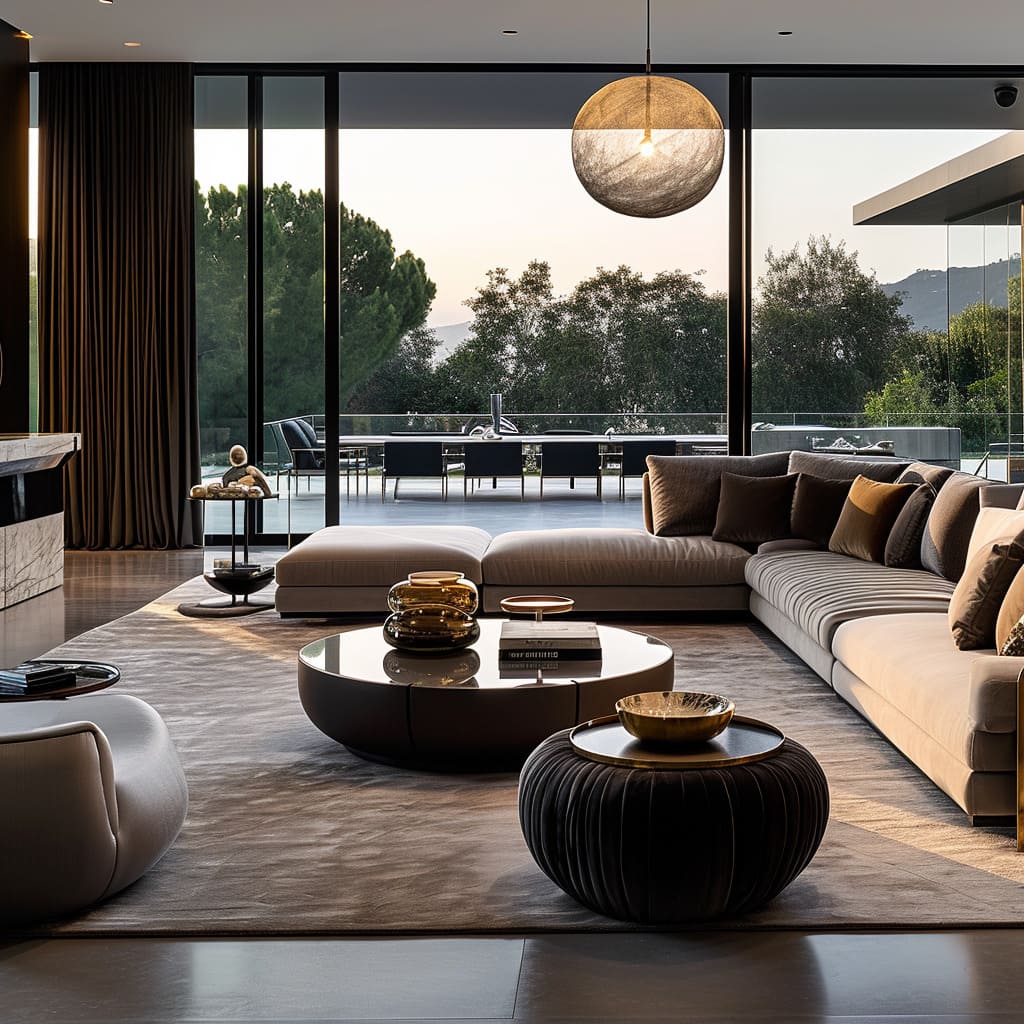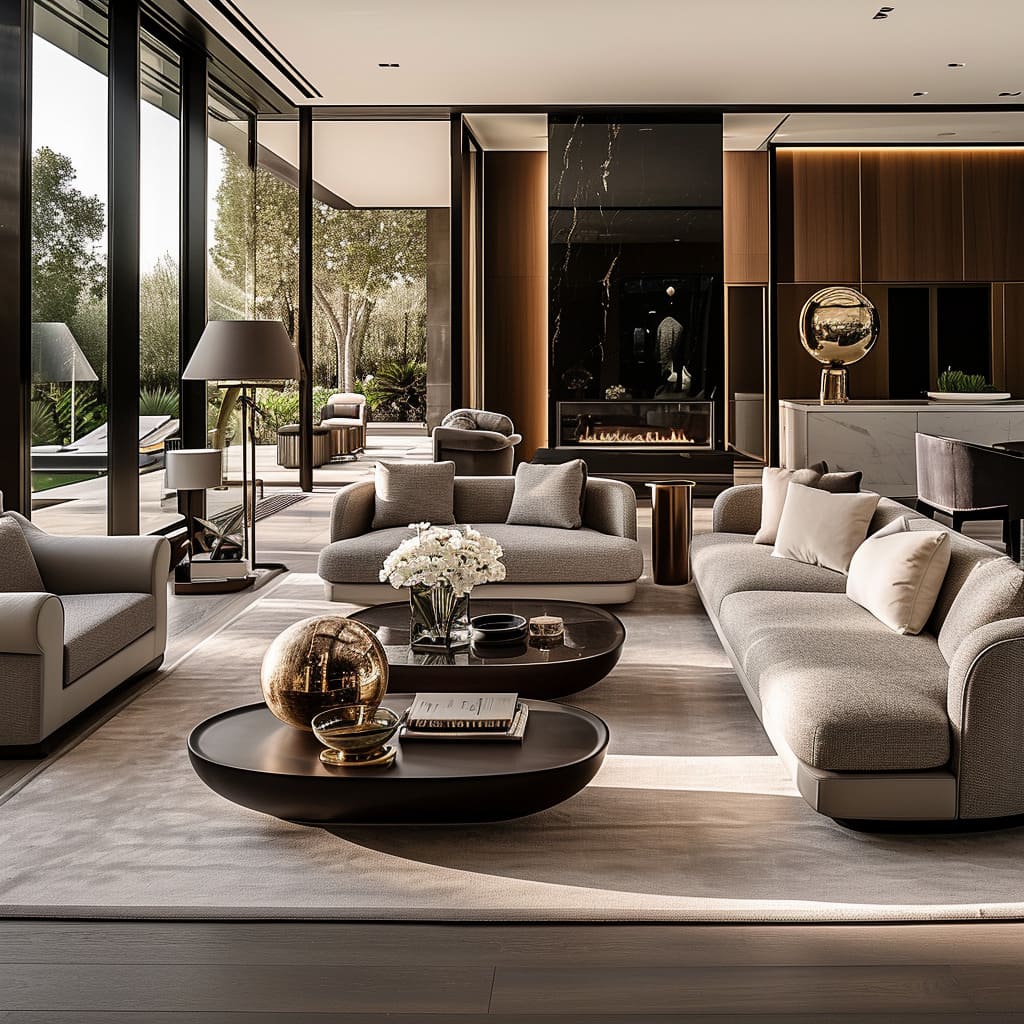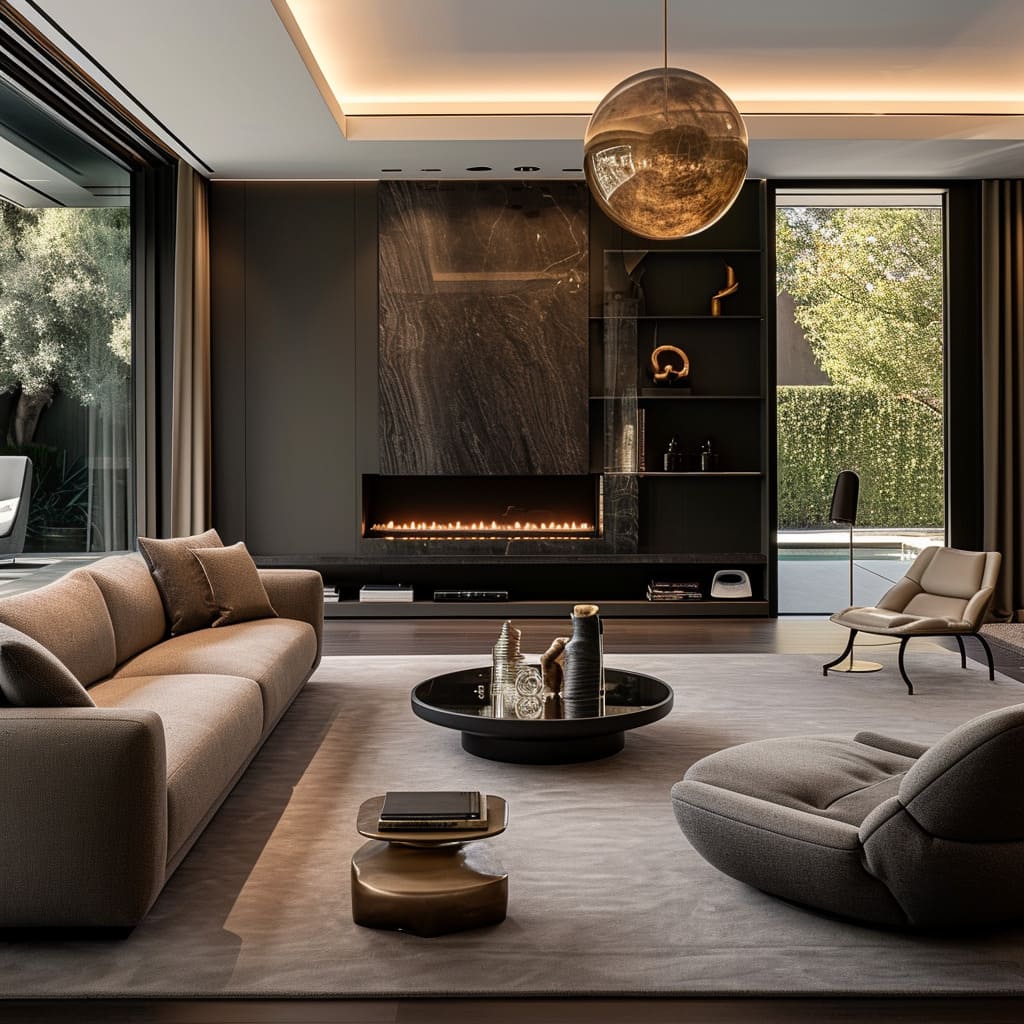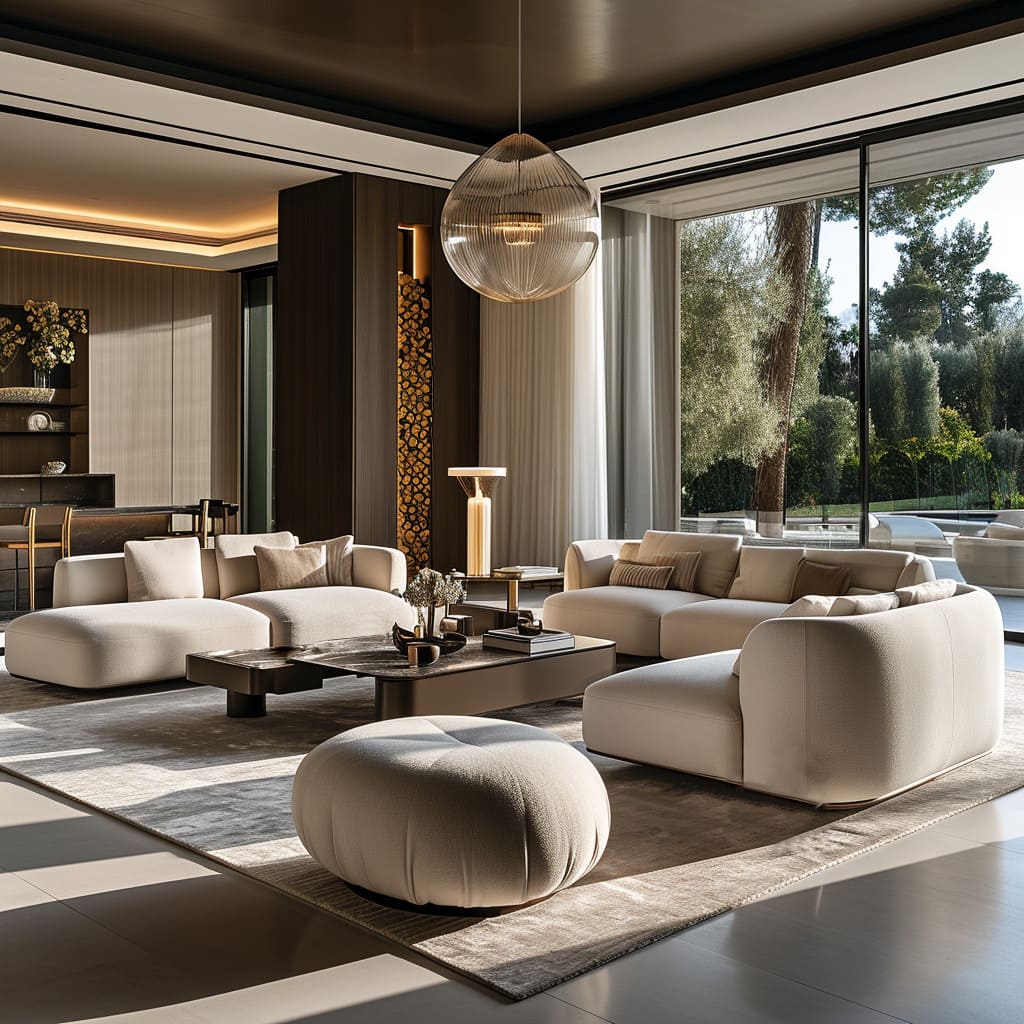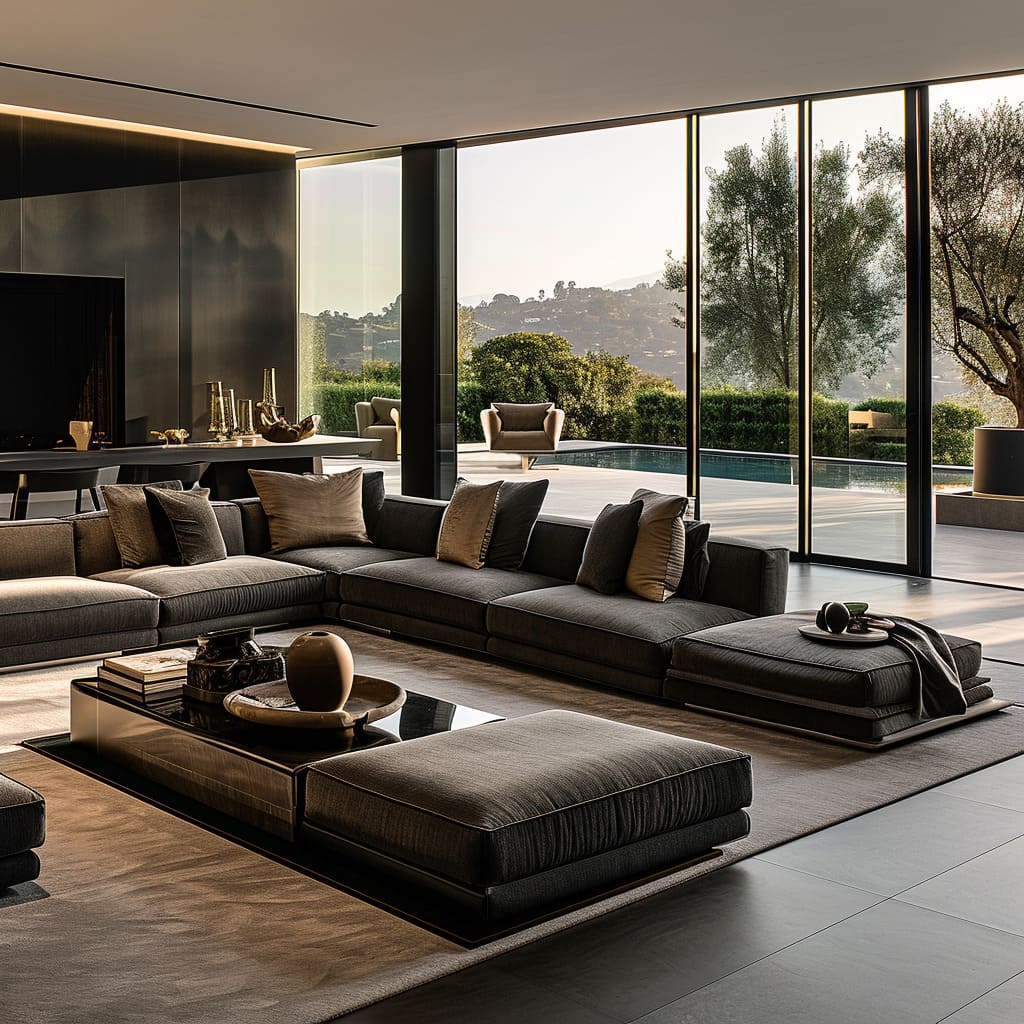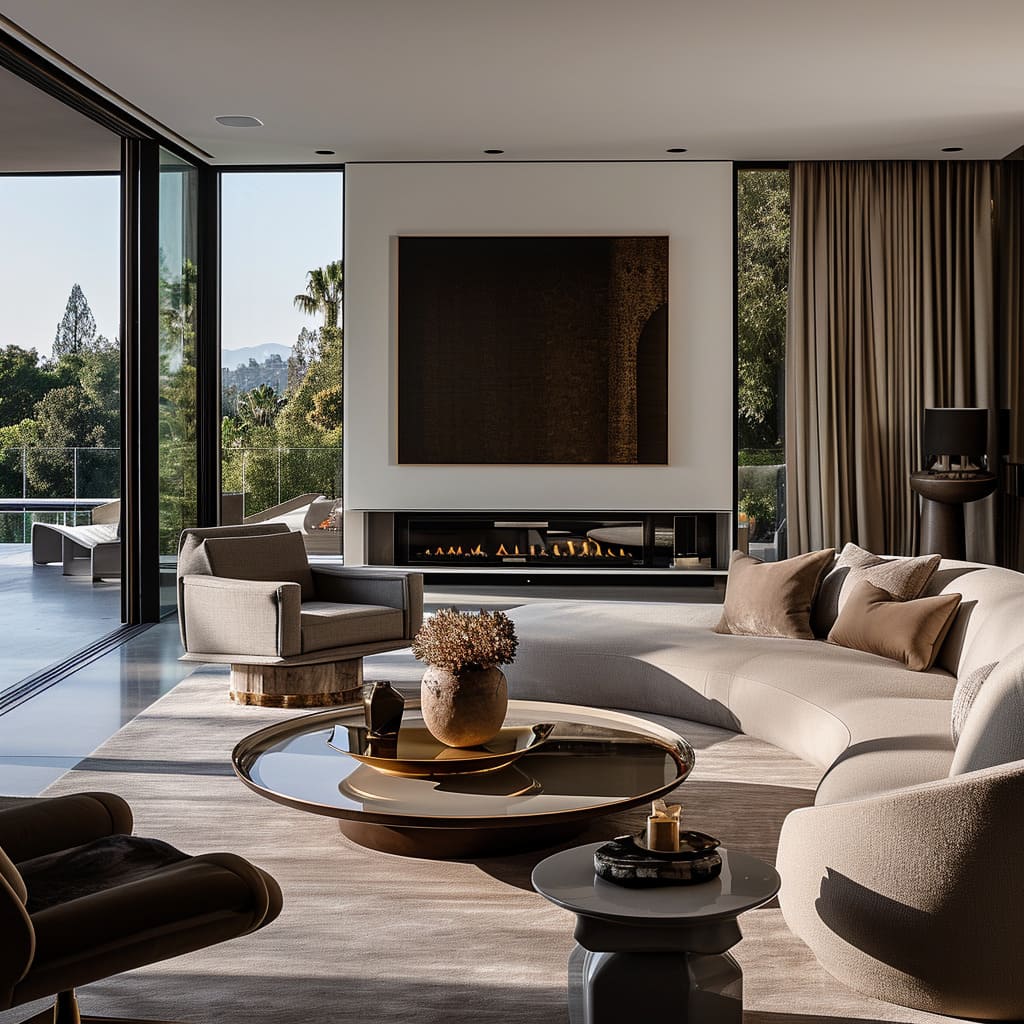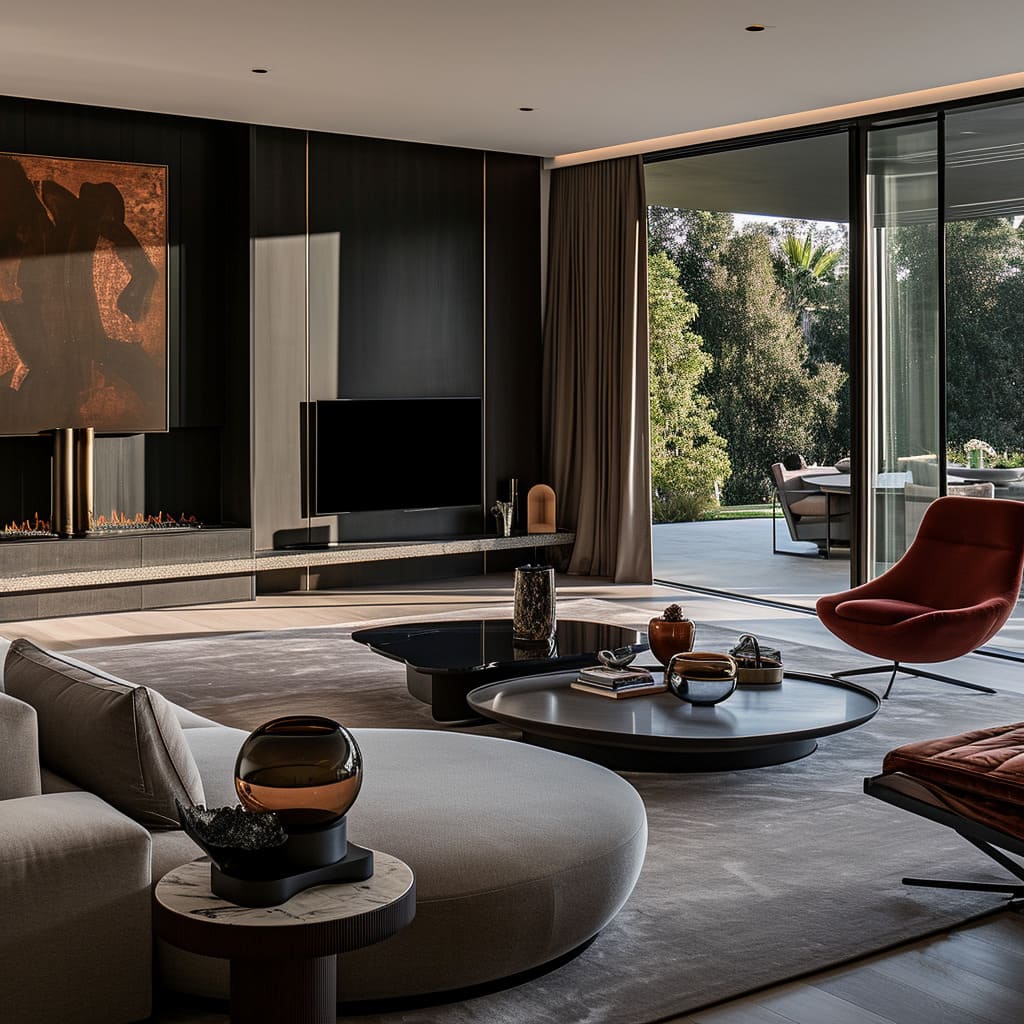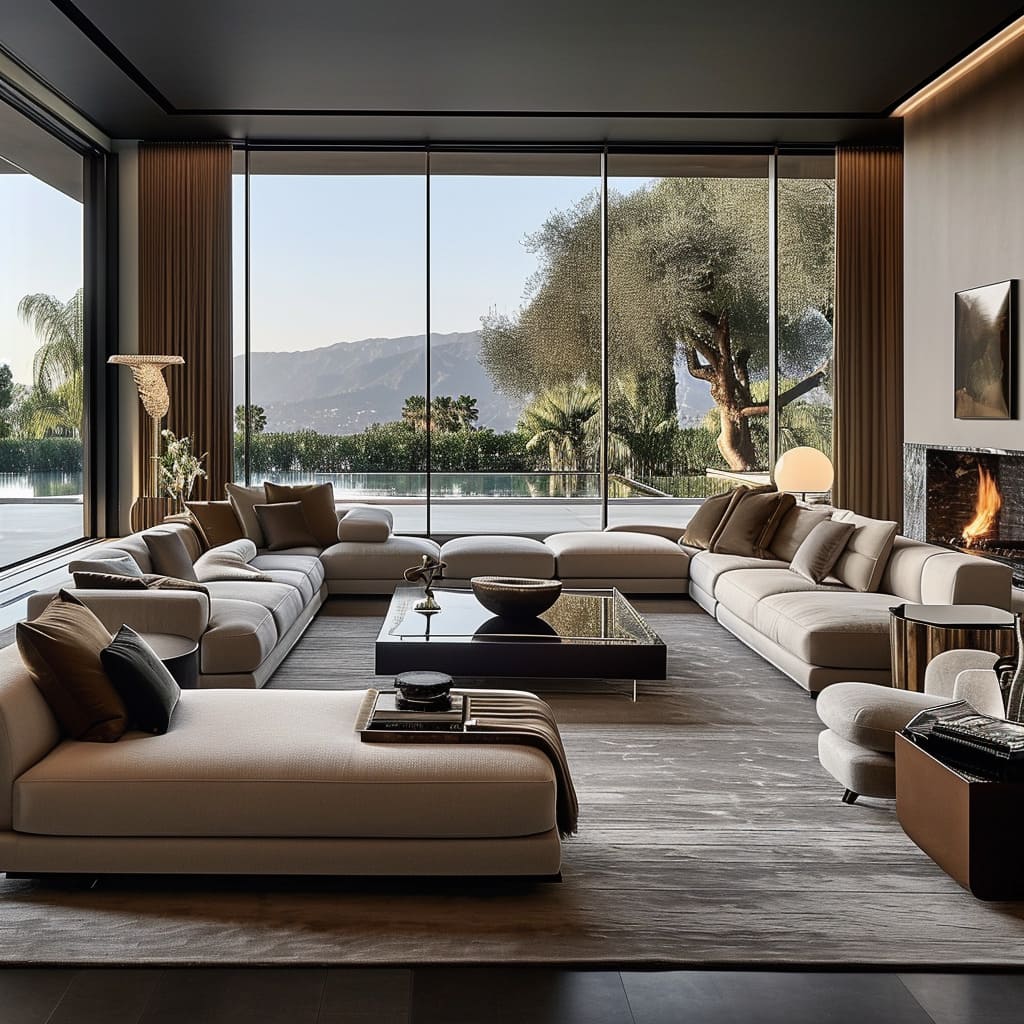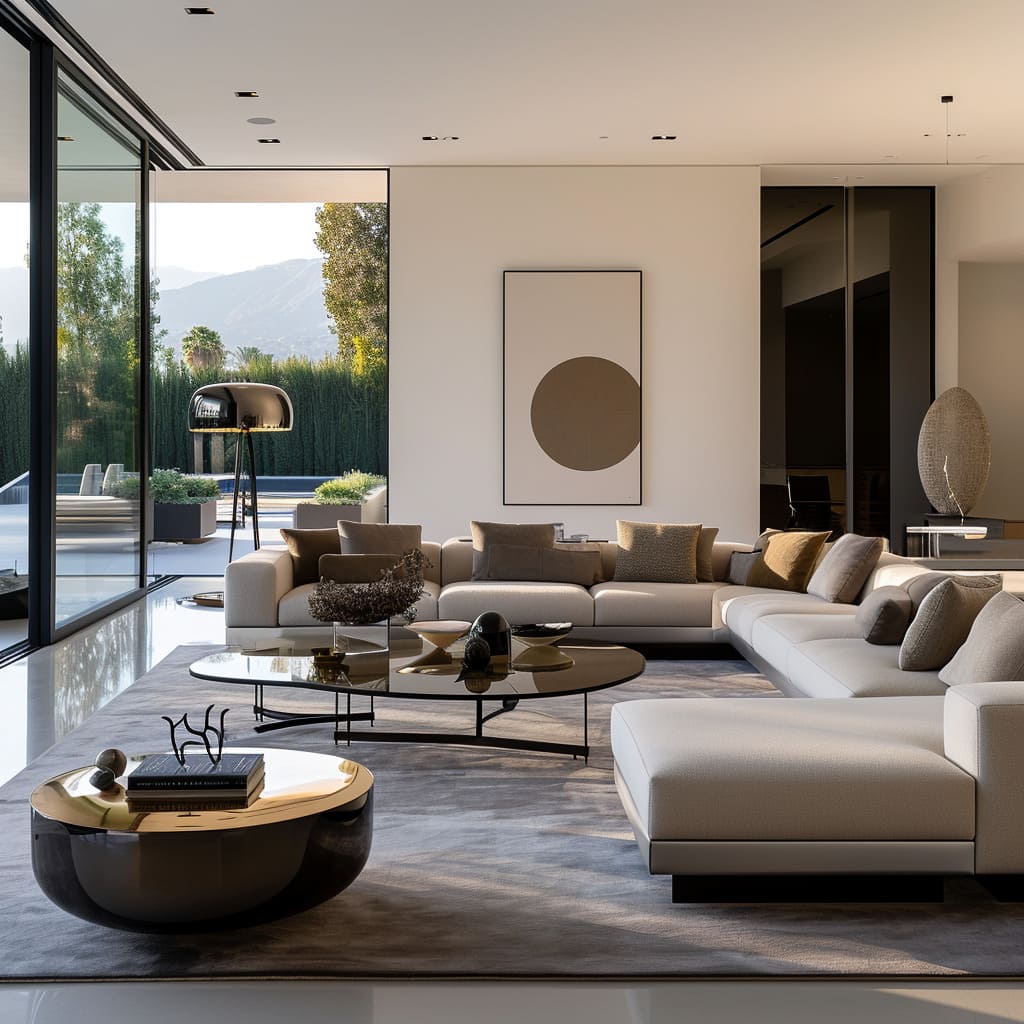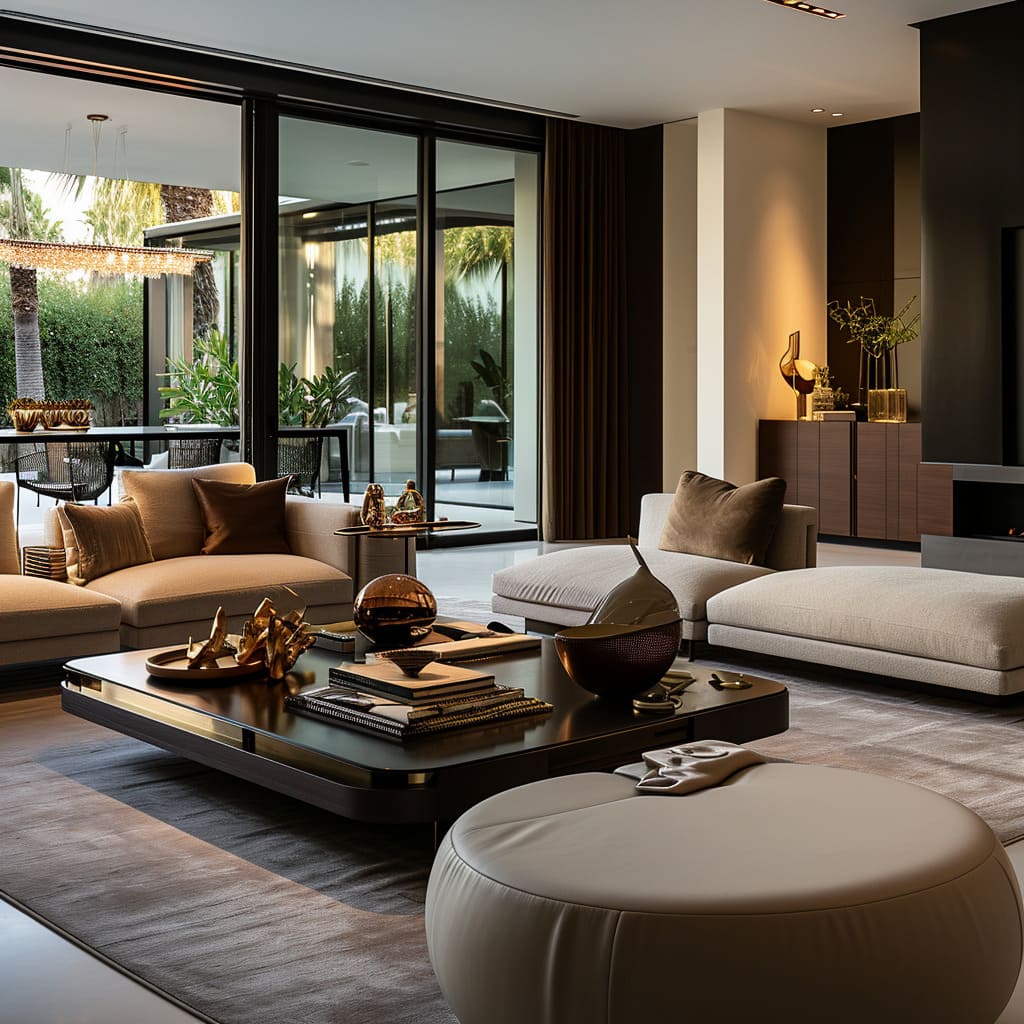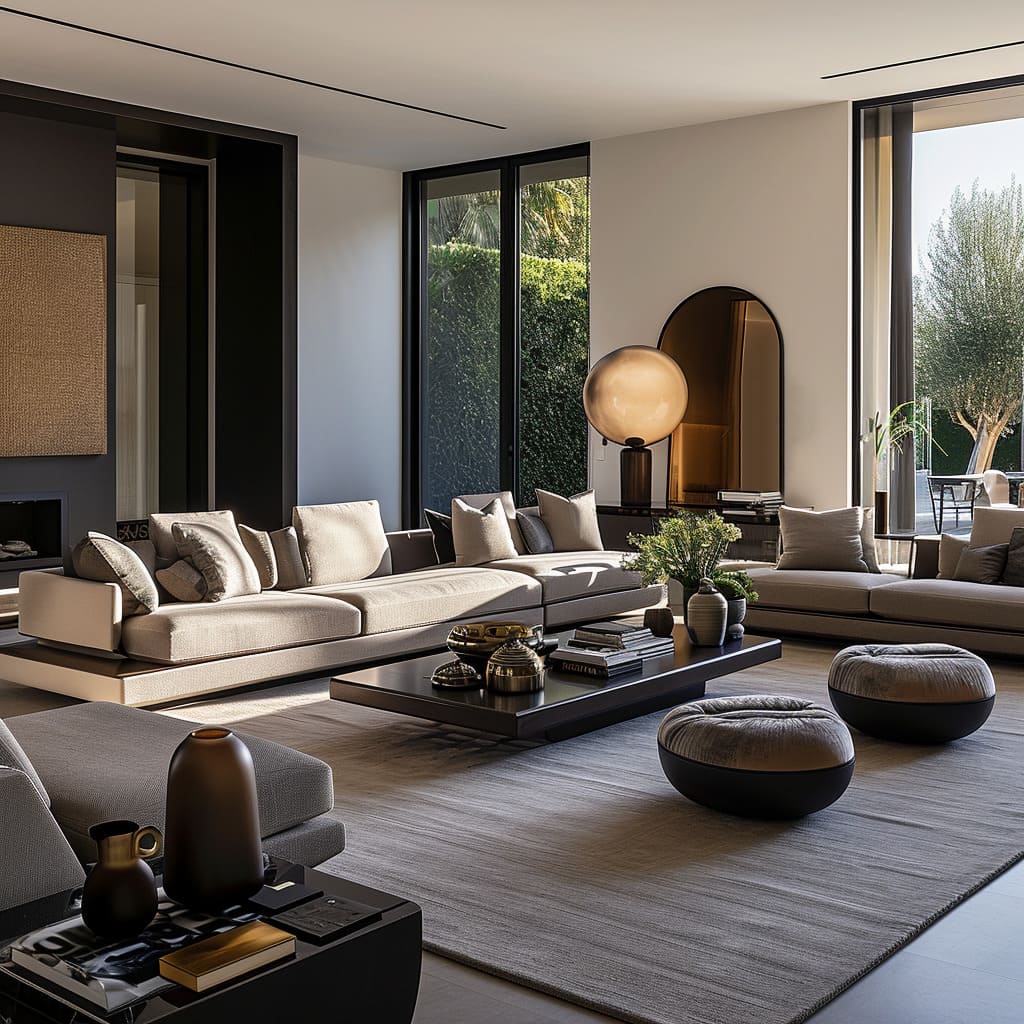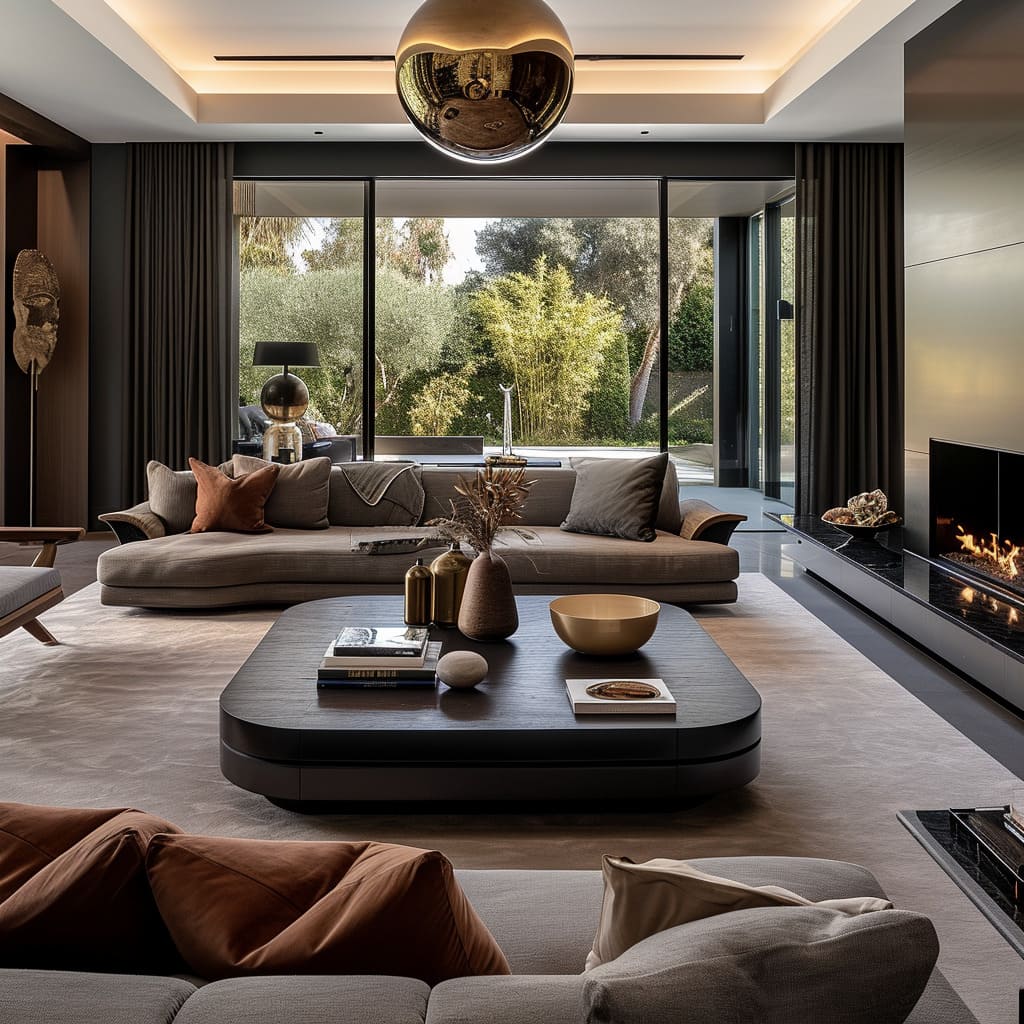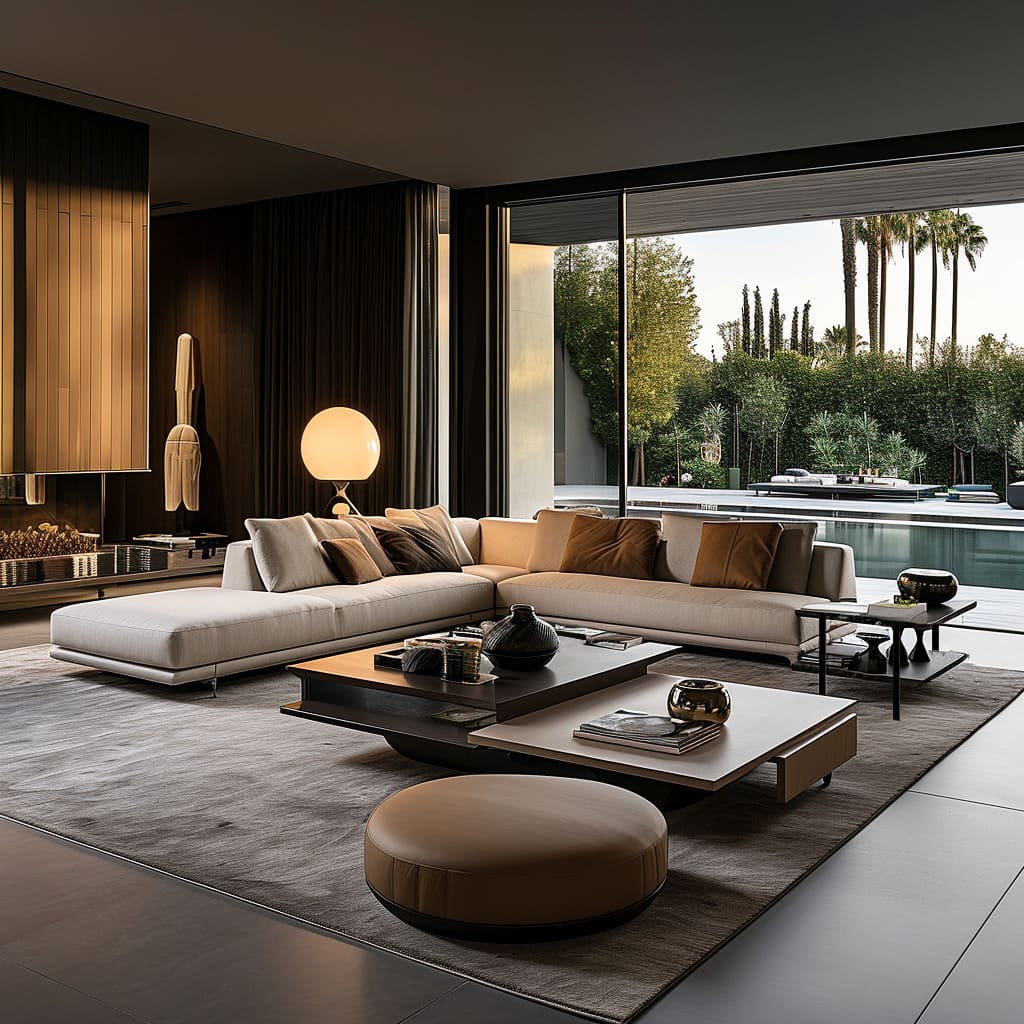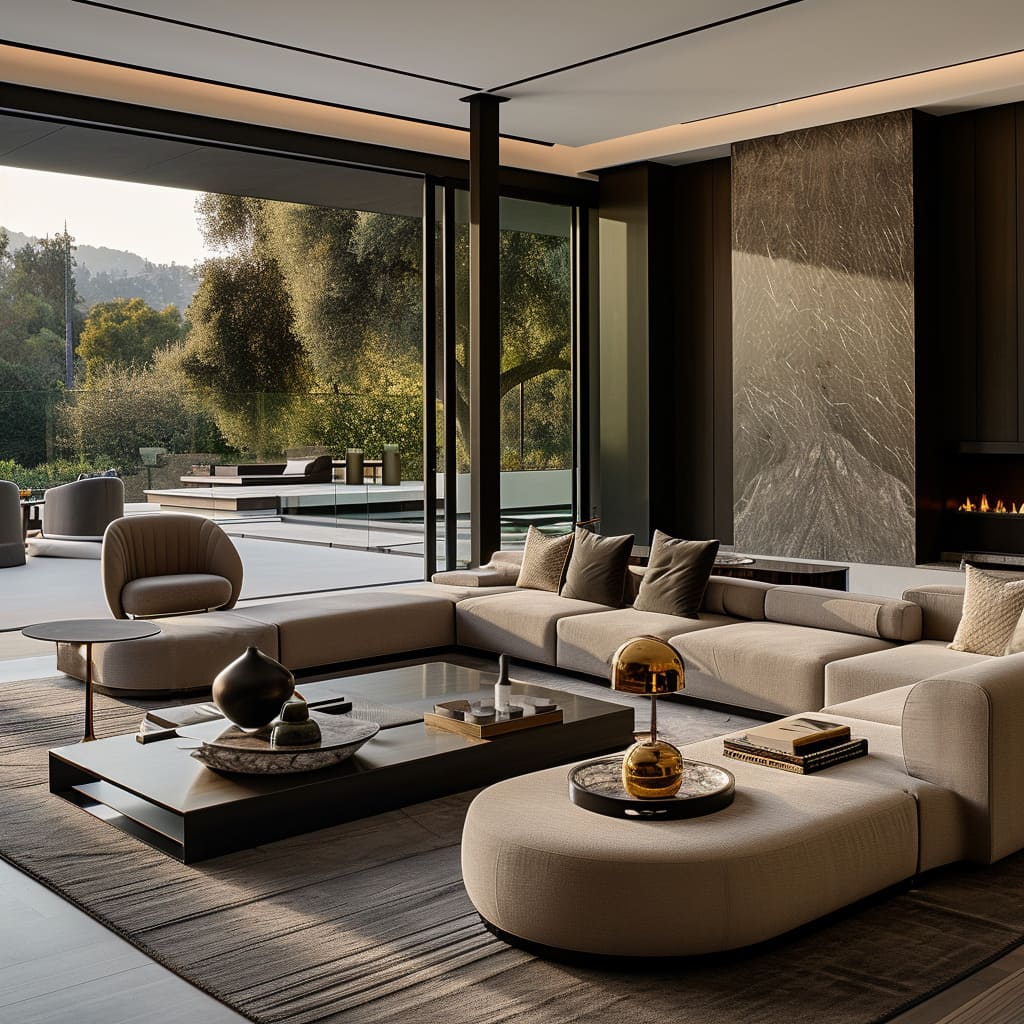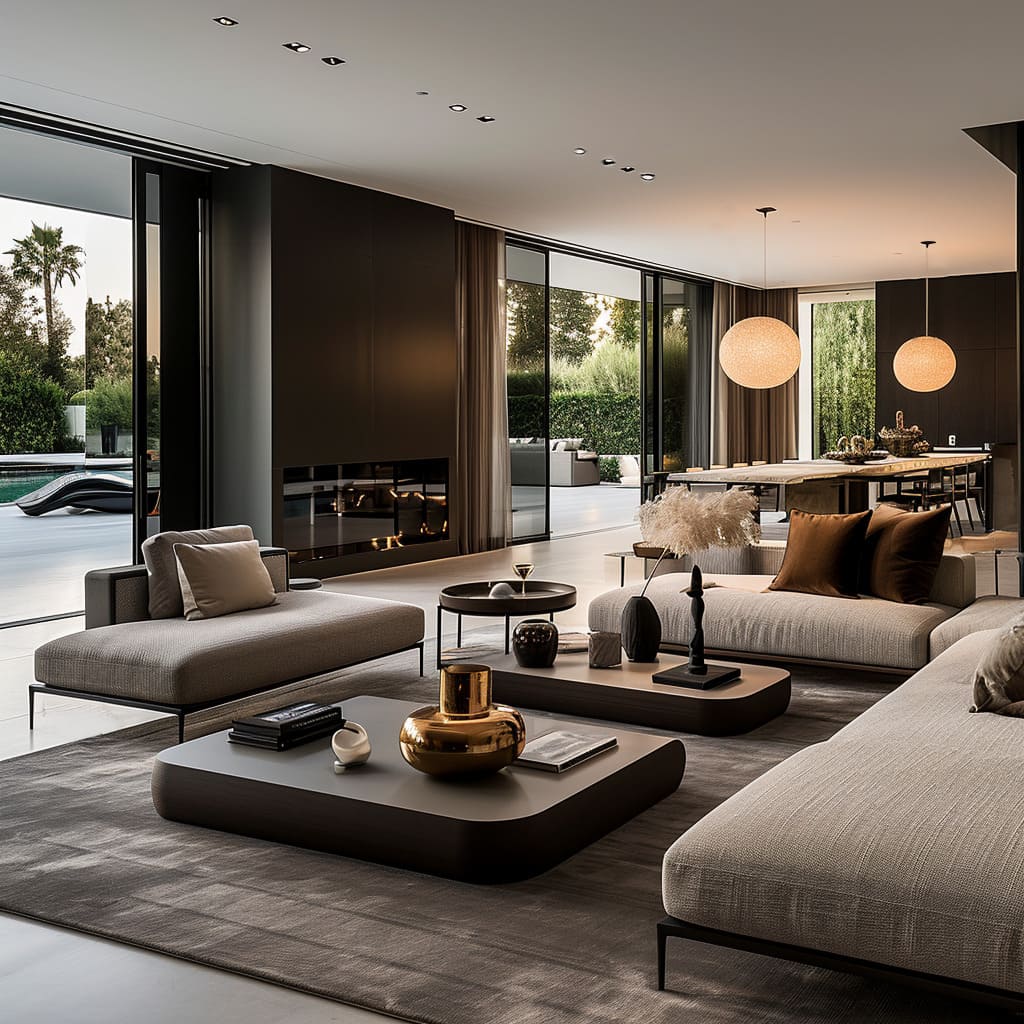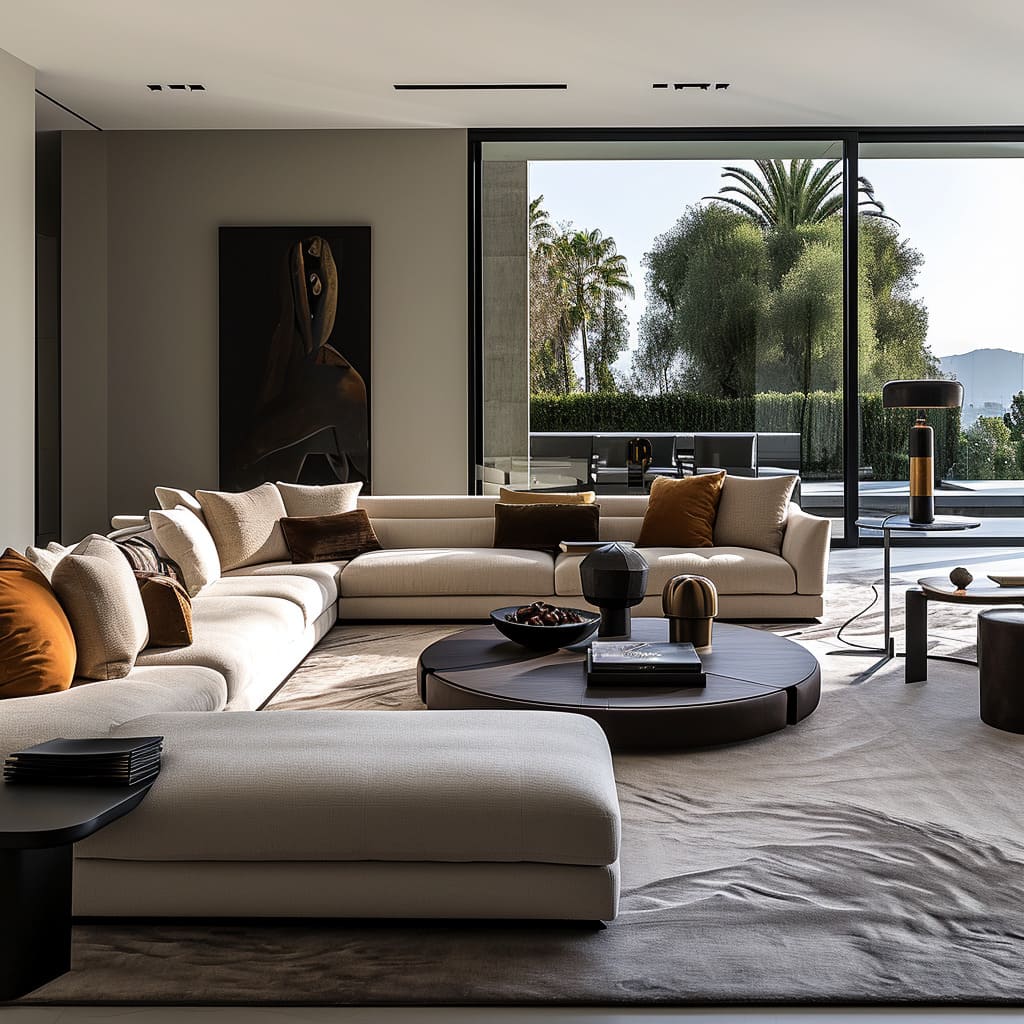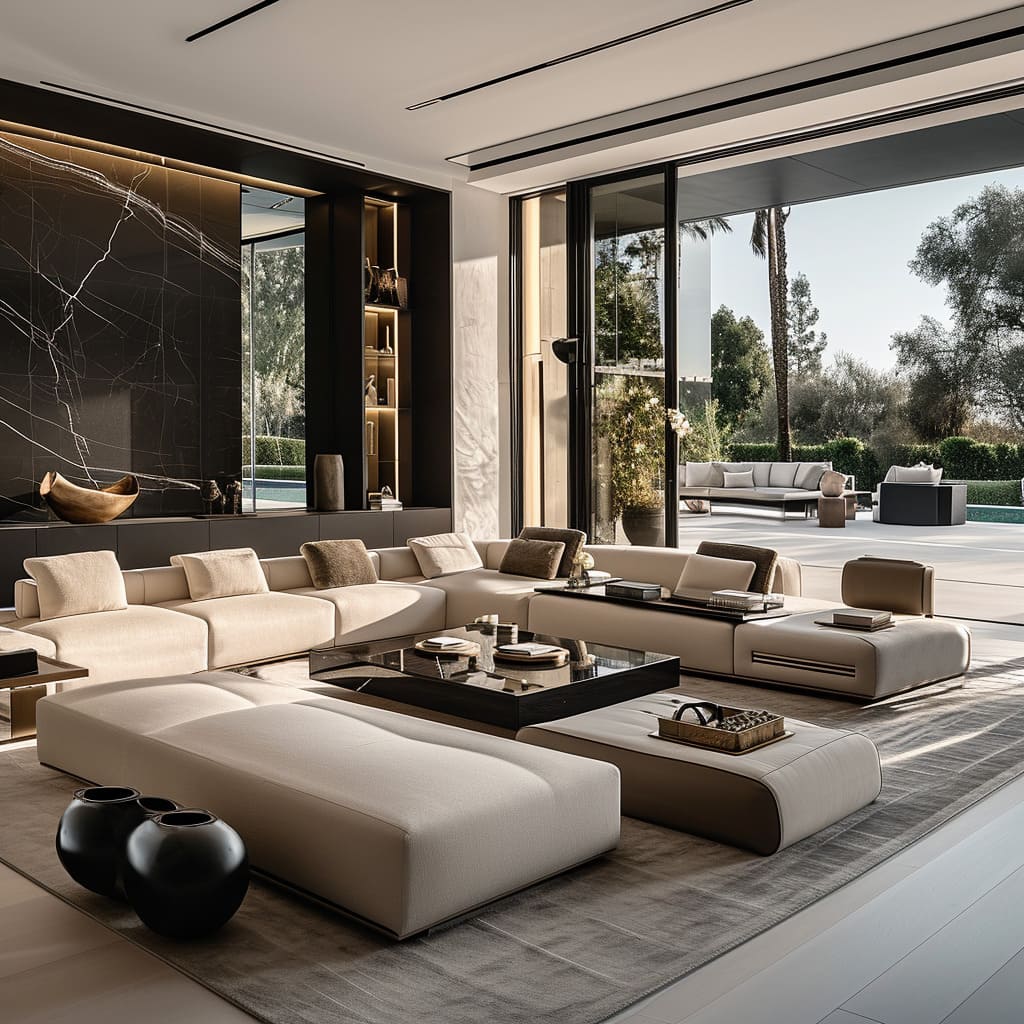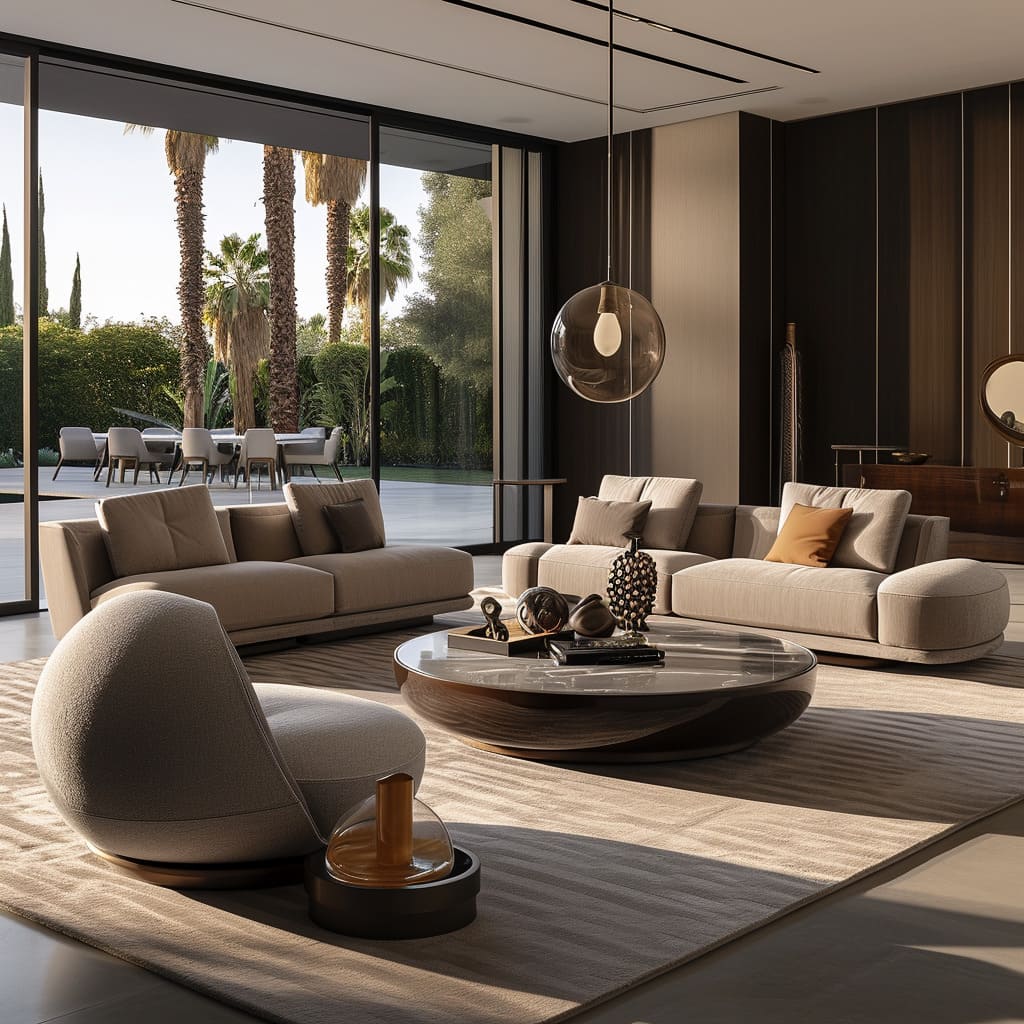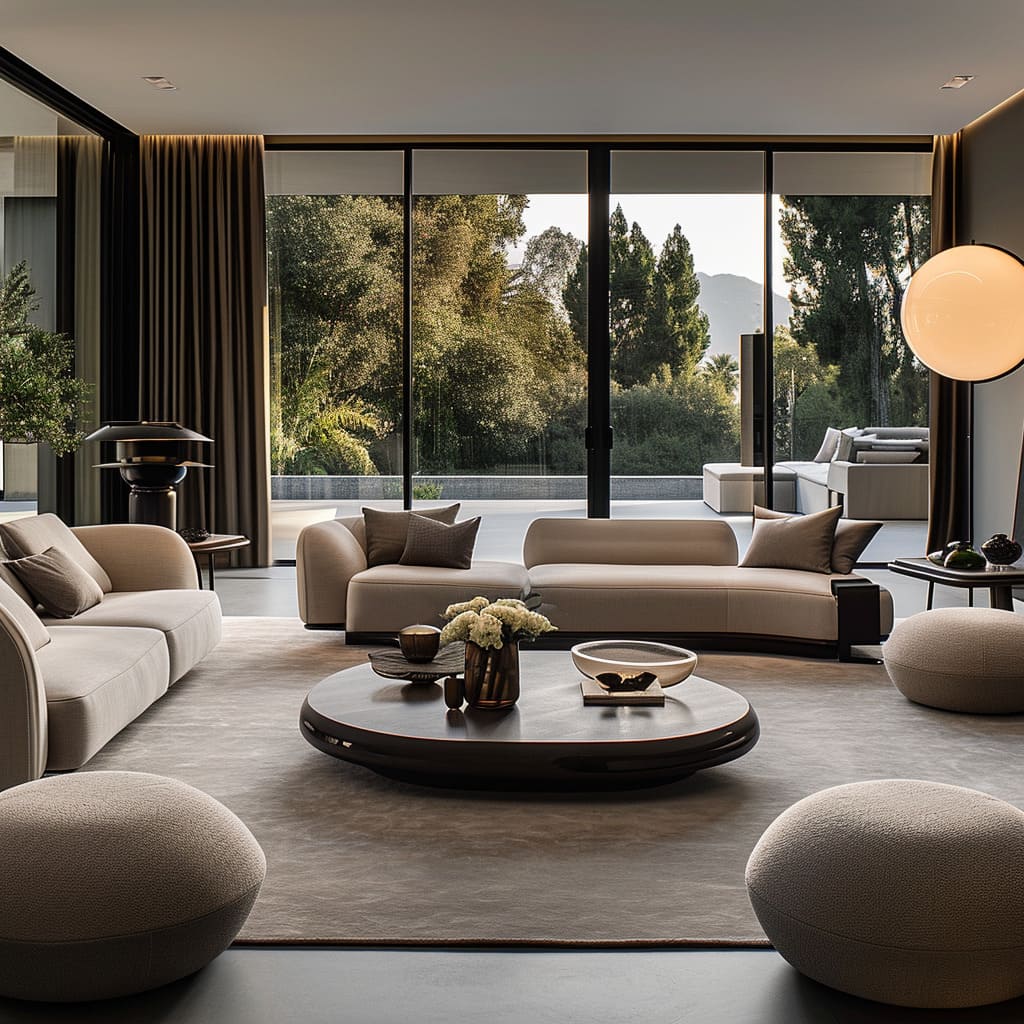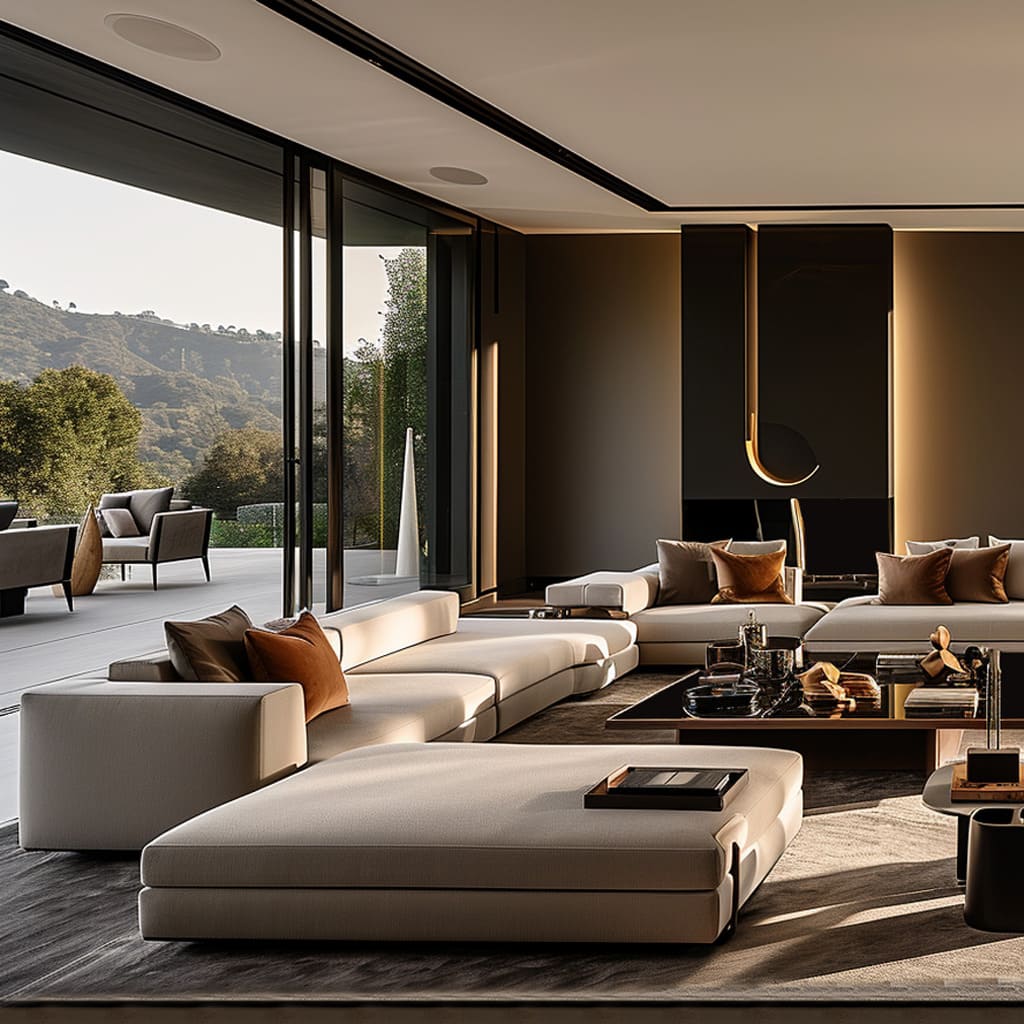Here we explore interior design, where the confluence of luxury and practicality creates spaces that are not just visually stunning but also comfortably livable. This article delves into the nuanced art of crafting interiors that exude elegance while serving the functional needs of daily life.
From thoughtful space planning to the selection of materials and integration of technology, we explore how each element works in harmony to create an environment that is both sophisticated and utilitarian. Whether you’re a seasoned designer or a homeowner looking to elevate your living space, these insights will guide you in achieving a balance of style and functionality, transforming your home into a haven of modern luxury.
Essential Elements of Modern Luxury Interior Design
The essence of modern luxury interior design lies in creating a sophisticated and inviting atmosphere through a blend of high-end features. These designs prioritize openness, seamlessly integrating living, dining, and outdoor spaces to foster a spacious and social environment.
Natural light is harnessed to enhance this airy ambiance, essential for both aesthetics and practicality.
Central to this style is the use of a neutral color palette, embracing shades like beige, taupe, and gray to establish a serene and adaptable background. This subtle canvas allows the room’s textures and forms to truly shine, highlighting the quality and variety of materials used.
The incorporation of natural stone, wood, and metal not only ensures durability but also injects a layer of luxury and depth into the space.
Texture plays a vital role, with a mix of soft upholstery and sleek, reflective surfaces creating an engaging sensory experience. The furniture, often modular in nature, is strategically arranged to promote conversation and comfort, making the area welcoming and flexible.
Modern technology integrates seamlessly into these designs, providing functionality without compromising the aesthetic. This is evident in features like modern fireplaces and sophisticated audio-visual systems.
Lighting is another critical element, with a combination of recessed ceiling lights, decorative pendants, and accent lighting employed to accentuate architectural features and set the mood.
Personal touches are evident through the careful placement of art, sculptures, books, and other accessories, each contributing to a curated and personalized feel. The connection to the outdoors is maintained through large windows, bridging indoor and outdoor living and offering picturesque views.
In these spaces, large area rugs define different zones, enhancing the sense of texture and warmth. The designs skillfully balance symmetry and asymmetry, creating visual interest and harmony.
Despite the opulence, a minimalist approach is evident, allowing the quality and design of each piece to be appreciated fully.
Custom shelving and storage solutions ensure effective use of space, maintaining a clutter-free environment. This approach to design achieves a cohesive look, with repetition in forms, materials, and colors tying the elements together.
Indoor greenery adds a vibrant, natural touch, contrasting with man-made materials and strengthening the indoor-outdoor connection.
Integrating Luxury and Functionality in Interior Design
Achieving a luxurious and functional interior design involves a harmonious blend of strategic planning and meticulous attention to detail. The key is to start with an open layout, removing non-structural walls to merge living, dining, and kitchen areas into a cohesive space.
This approach should be complemented by consistent flooring and strategically placed furniture to subtly define different zones while maintaining a visual connection throughout the area.
A neutral color palette is essential in this design scheme. Opt for shades that enhance the natural lighting of the room, applying these tones to walls, large furniture pieces, and flooring.
The true depth and sophistication of the space can be achieved by layering different textures in similar tones, providing a serene yet dynamic ambiance.
The quality of materials plays a pivotal role in elevating the overall feel of the home. Investing in high-quality materials for frequently used surfaces and key pieces, such as granite countertops, hardwood flooring, or genuine leather sofas, can have a significant impact.
These materials not only offer greater longevity but also add a touch of elegance to the space.
Texture variation is another crucial element, where a mix of textiles like throws, pillows, and rugs interact with smoother surfaces such as glass and metal, creating an inviting tactile experience. Modular furniture adds another layer of flexibility to the design, with pieces that can be easily rearranged to suit different occasions and adapt to the changing needs of your living space.
Technology integration should be considered early in the design process. It’s important to think about the placement of built-in speakers, the concealment of wiring, and the positioning of screens to ensure that technology complements the room’s design without becoming a visual distraction.
Lighting is a transformative aspect of interior design. A mix of different lighting types, such as recessed ceiling lights for overall illumination, pendant lights for specific tasks or as statement pieces, and accent lighting to highlight artwork or architectural features, can dramatically alter the mood and feel of a space.
The addition of dimmer switches allows for the creation of various atmospheres within the same environment.
Personal style should shine through in the selection of art and accessories. It’s advisable to take time to find pieces that not only resonate with your personal taste but also speak to the overall aesthetic of the room.
This personalized approach ensures that each space feels unique and thoughtfully curated.
The connection to the outdoors is another important consideration. Creating a strong indoor-outdoor flow can be achieved by using materials that extend from the inside out, such as similar flooring materials or color schemes.
Large sliding or bi-fold doors not only allow natural light to flood in but also facilitate physical movement between these spaces.
Area rugs are a practical and stylish way to define different areas within an open-plan space. Choosing rugs that complement the room’s color scheme and are appropriately sized for the area helps to anchor the space and add a layer of comfort and warmth.
A thoughtful balance of symmetry and asymmetry in the arrangement of furniture and accessories can create a sense of order and interest. Symmetrical arrangements provide a formal and balanced look, while asymmetrical placements introduce dynamism and visual intrigue.
Embracing minimalism, with a focus on furniture featuring clean lines and limiting decorative items, helps maintain a clutter-free and serene environment. This minimalist approach emphasizes the quality and craftsmanship of a few well-chosen pieces rather than an abundance of items.
Custom shelving and storage solutions, designed specifically for your space, can maximize storage while maintaining a streamlined look. Custom cabinetry, especially in awkward spaces, ensures that every inch of the room is effectively utilized.
To create a harmonious interior, it’s important to repeat key elements such as shapes, materials, or colors throughout the space. This repetition helps to tie the room together, creating a unified design language.
Finally, incorporating plants into your design brings in natural elements, adding vibrancy and life to the room. Selecting plants that thrive in your room’s conditions and considering their care requirements ensures that they not only enhance the aesthetic but also contribute to the overall well-being of the space.
In summary, the art of blending luxury with functionality in interior design hinges on careful planning and a keen eye for detail. By embracing open layouts, neutral color palettes, high-quality materials, and varied textures, one can create a space that is both elegant and practical.
Incorporating modular furniture, integrated technology, and strategic lighting further enhances the versatility and comfort of the living environment. Personal touches through art and accessories, along with a thoughtful connection to the outdoors, add character and cohesion to the design.
Emphasizing minimalism, custom storage solutions, and a balanced use of symmetry and asymmetry ensures a harmonious and clutter-free space. Finally, the inclusion of indoor greenery brings a refreshing natural element, completing the sophisticated yet livable ambiance of the home.
This approach to interior design not only achieves aesthetic excellence but also ensures a space that is enjoyable and functional for everyday living.


